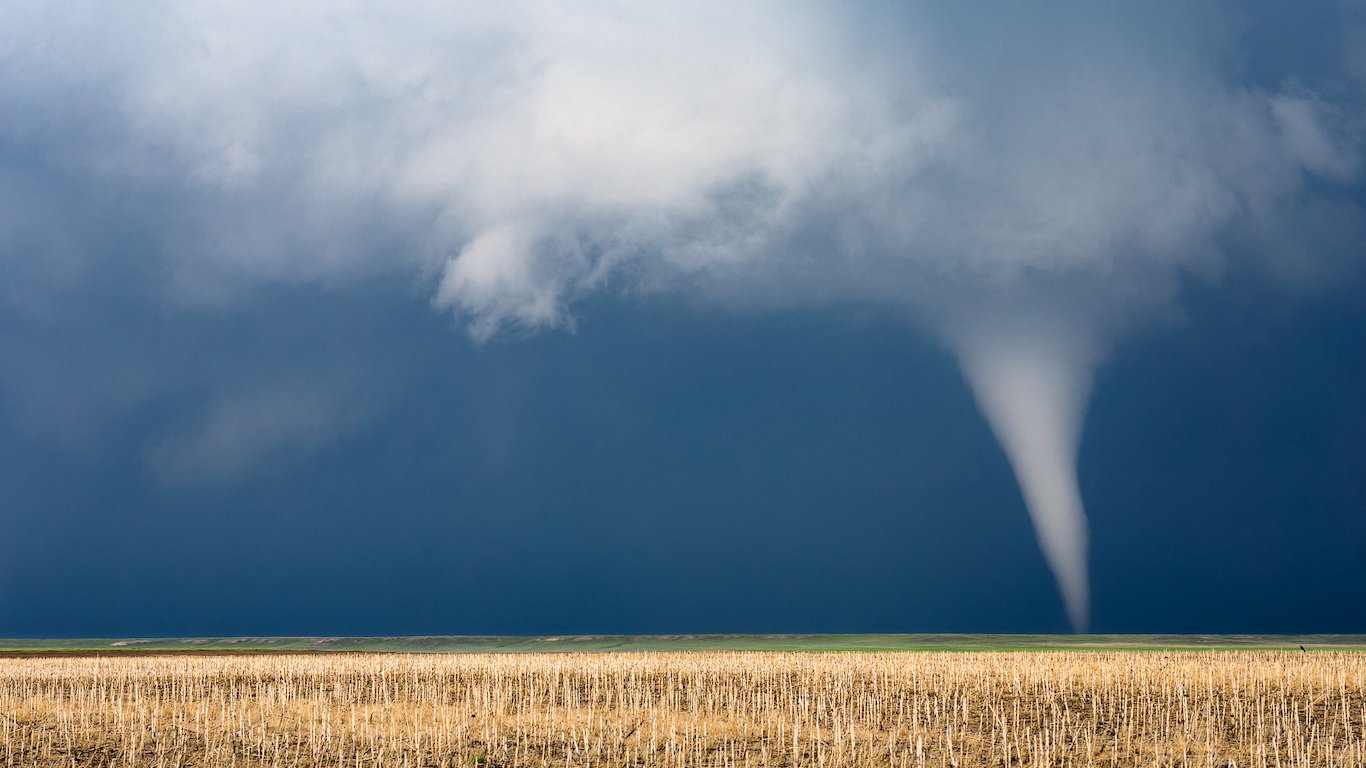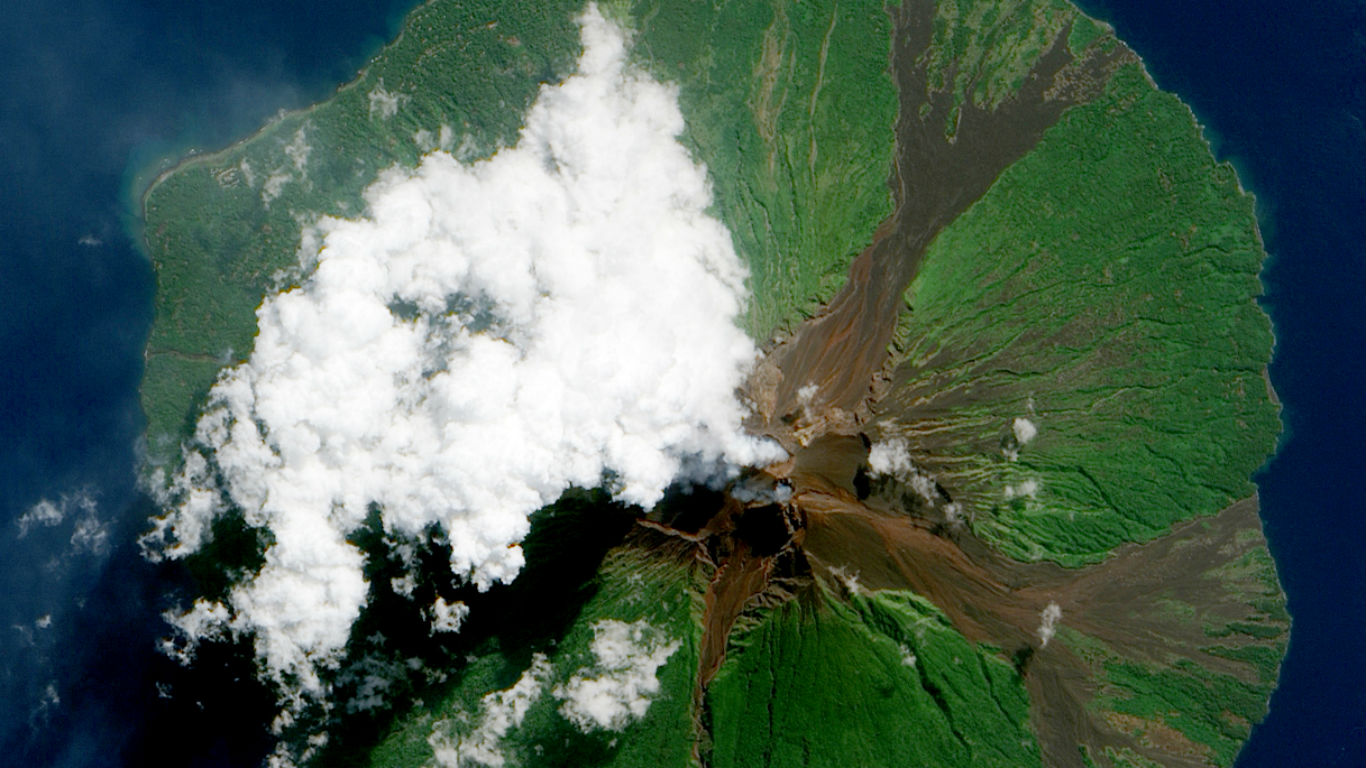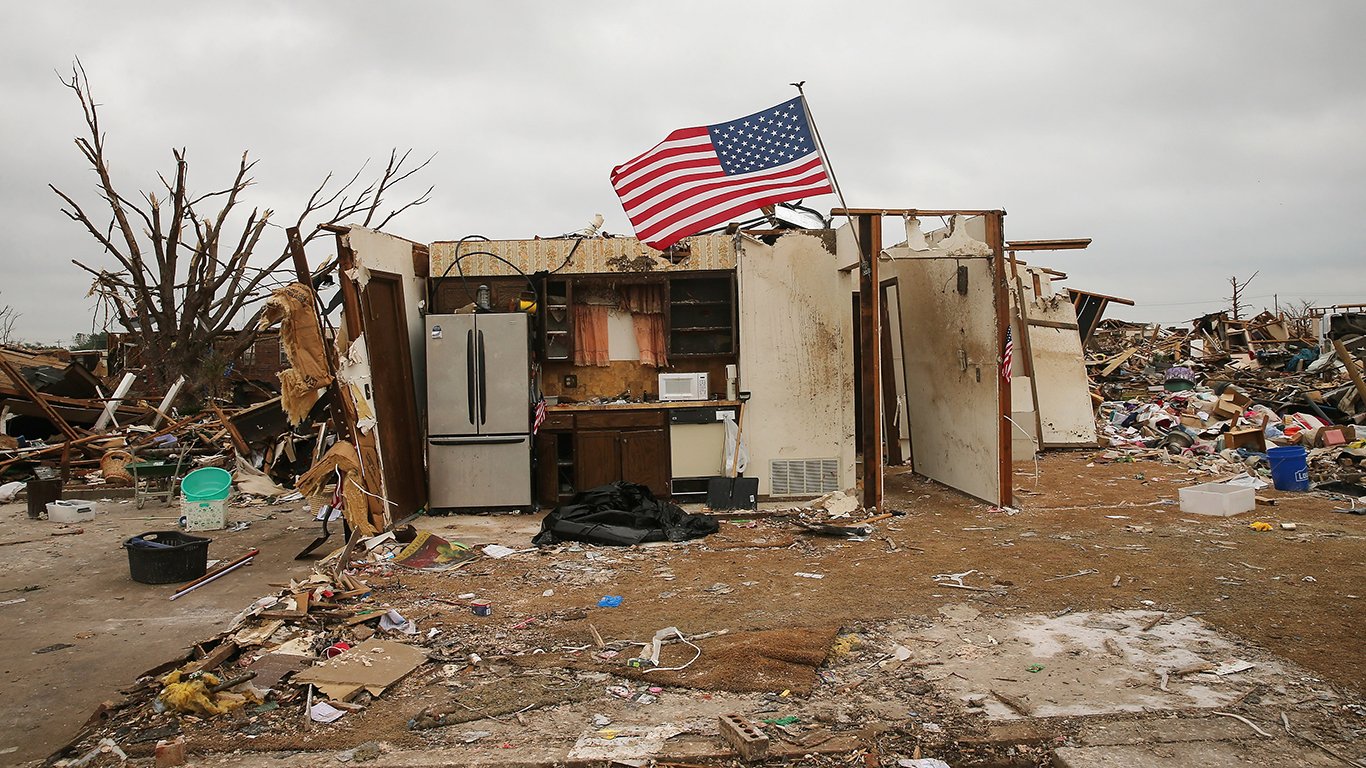

“Incidents of extreme weather are projected to increase as a result of climate change,” according to the National Oceanic and Atmospheric Administration. And the climate crisis continues to intensify. The last four years have been the four hottest years since NOAA began keeping records 139 years ago. Additionally, sea levels have risen by 8 inches since 1880, and 3.7 inches since 1995. Meanwhile, extreme weather events are becoming more common and more catastrophic.
While it is difficult to attribute a single extreme weather event to climate change, the broad trends more easily demonstrate the effects of a warming planet. For example, in the last decade, there have been 111 climate related natural disasters that have caused at least $1 billion in damage. Over the preceding decade, there were only 59 such disasters.
Between 2010 and mid-2019, major storms and climate-related events caused a total of $761 billion in damage and killed nearly 5,200 people in the United States. In comparison, the most destructive natural disasters in the previous decade caused $507 billion in damage and killed 3,051 people. In fact, since 1980, 39% of all deaths and 45% of all damage from major natural disasters occured within the last 10 years.
24/7 Wall St. reviewed data from NOAA National Centers for Environmental Information (NCEI) U.S. Billion-Dollar Weather and Climate Disasters (2019) to identify the worst climate related natural disasters in the last 10 years. For the purposes of this story, the natural disaster’s severity was determined by the estimated number of people killed, either directly or indirectly, as reported by NOAA. Only storms in which there were at least five known fatalities were considered. For comparison purposes, all estimates of cost of damages were adjusted for inflation.
It is important to note that not all disasters on this list are single discrete events. For example, based on NOAA’s classifications, wildfires that occur within the same season — even if they span different regions — are typically grouped together as a single event. Similarly, a single storm system can produce hundreds of tornadoes and span multiple states over the course of several days, but all are still grouped under a single entry. Other events on this list, like droughts, can span the majority of the country and last for the better part of a year.
Many of the most destructive and deadly storms are hurricanes. Of the 50 worst natural disasters of the last decade, nine are hurricanes, including Hurricane Maria, the deadliest billion dollar storm to hit the United States since at least 1980. Here is a full list of the most powerful hurricanes of all time.
While high-wind events like hurricanes and tornadoes are common on this list, it is not the wind that is often the most destructive aspect of these storms. Tornadoes typically come with thunderstorms that can bring torrential rain. And along with rain, hurricanes can bring storm surges to coastal areas. These conditions often bring about flooding — and many of the natural disasters on this list would not have been nearly as harmful if not been for the flooding they caused. Here is a look at the worst floods in American history.
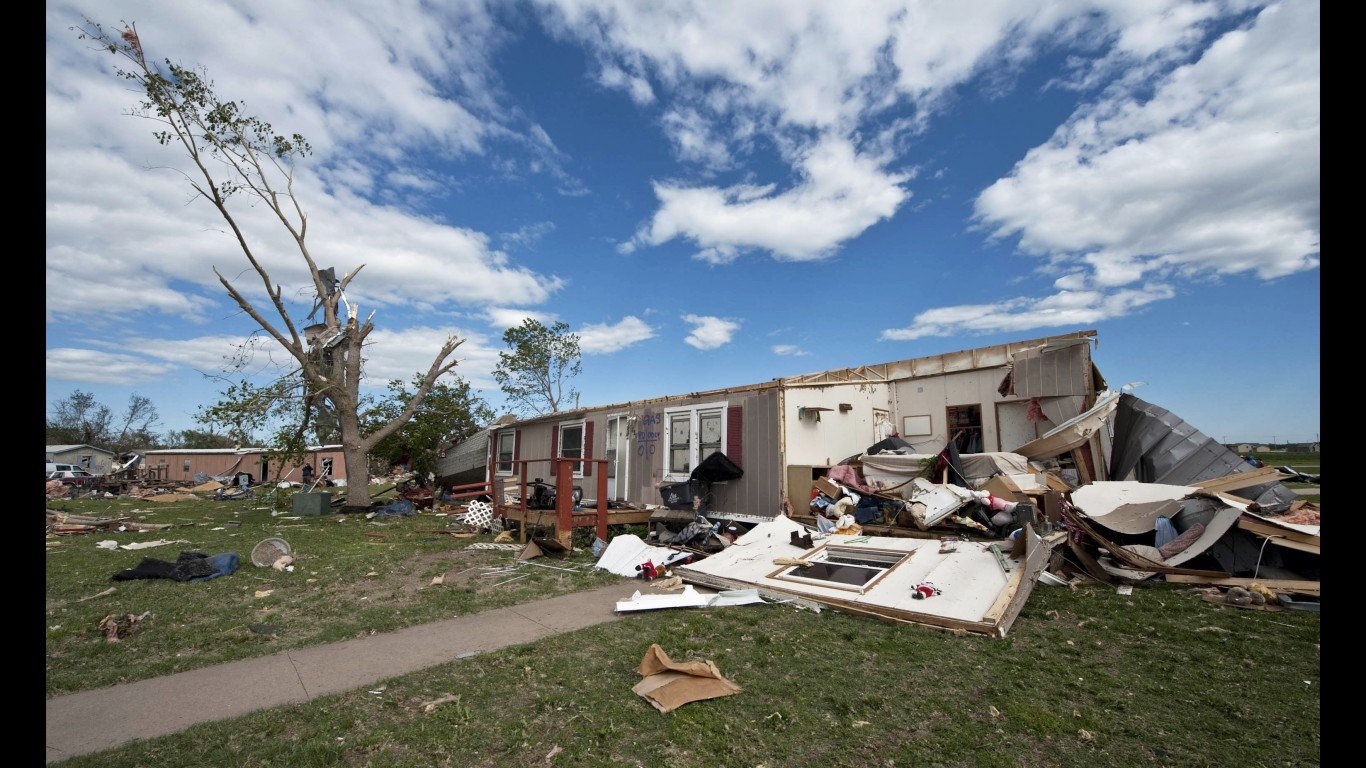
50. Midwest Tornadoes
> Deaths: 6
> Est. cost: $1.3 billion
> Disaster classification: Severe storm
> Date: April 2012
In mid-April 2012, an outbreak of 98 confirmed tornadoes tore across Oklahoma, Kansas, Nebraska, and Iowa over a two-day period. The storms left six dead in Woodward, Oklahoma, destroyed 75% of the town of Thurman, Iowa, and lead the governors of both Kansas and Oklahoma to declare a state of emergency.
[in-text-ad]
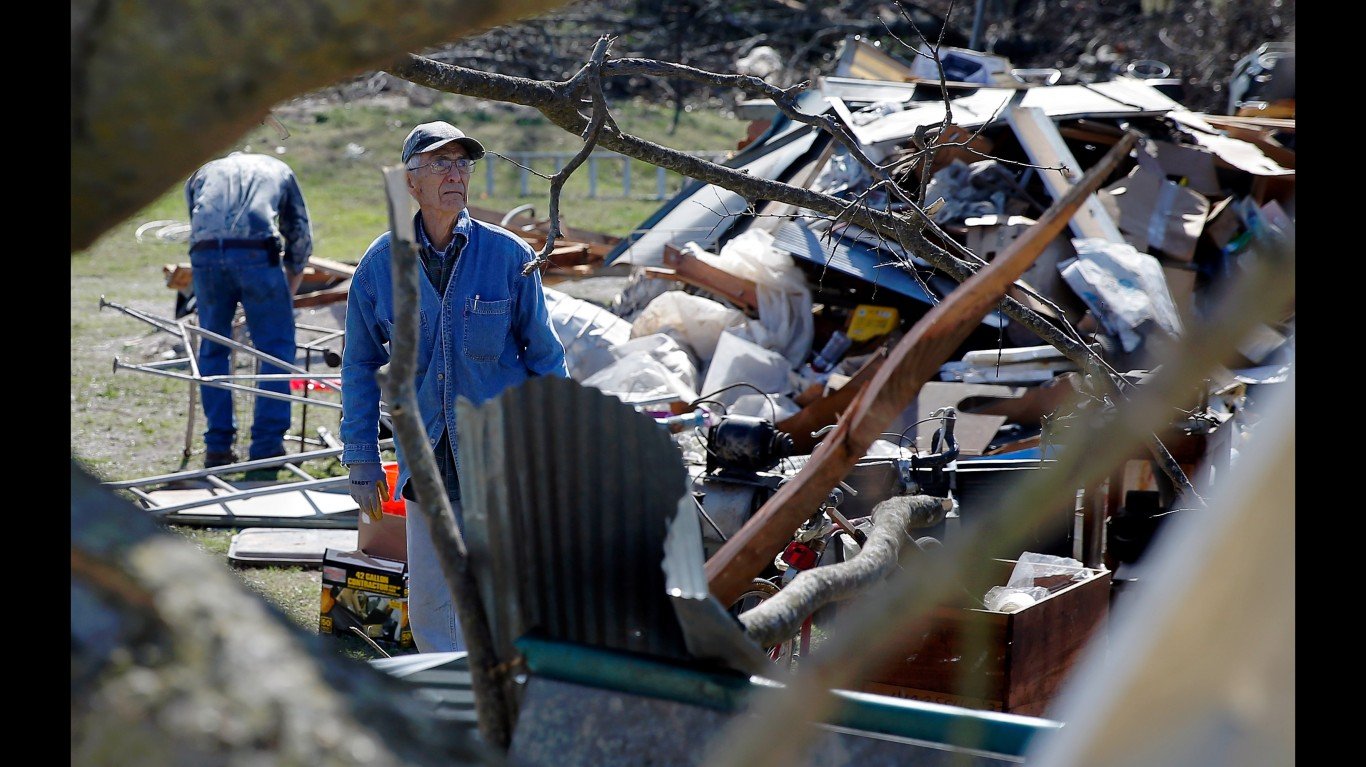
49. Central/Southeast Tornado Outbreak
> Deaths: 6
> Est. cost: $1.9 billion
> Disaster classification: Severe storm
> Date: March 2017
In late February and early March 2017, more than 70 tornadoes hit several southern and central states, including Missouri, Illinois, and Kentucky. The storms claimed six lives and caused nearly $2 billion in damage. It was the second largest tornado outbreak in early 2017.
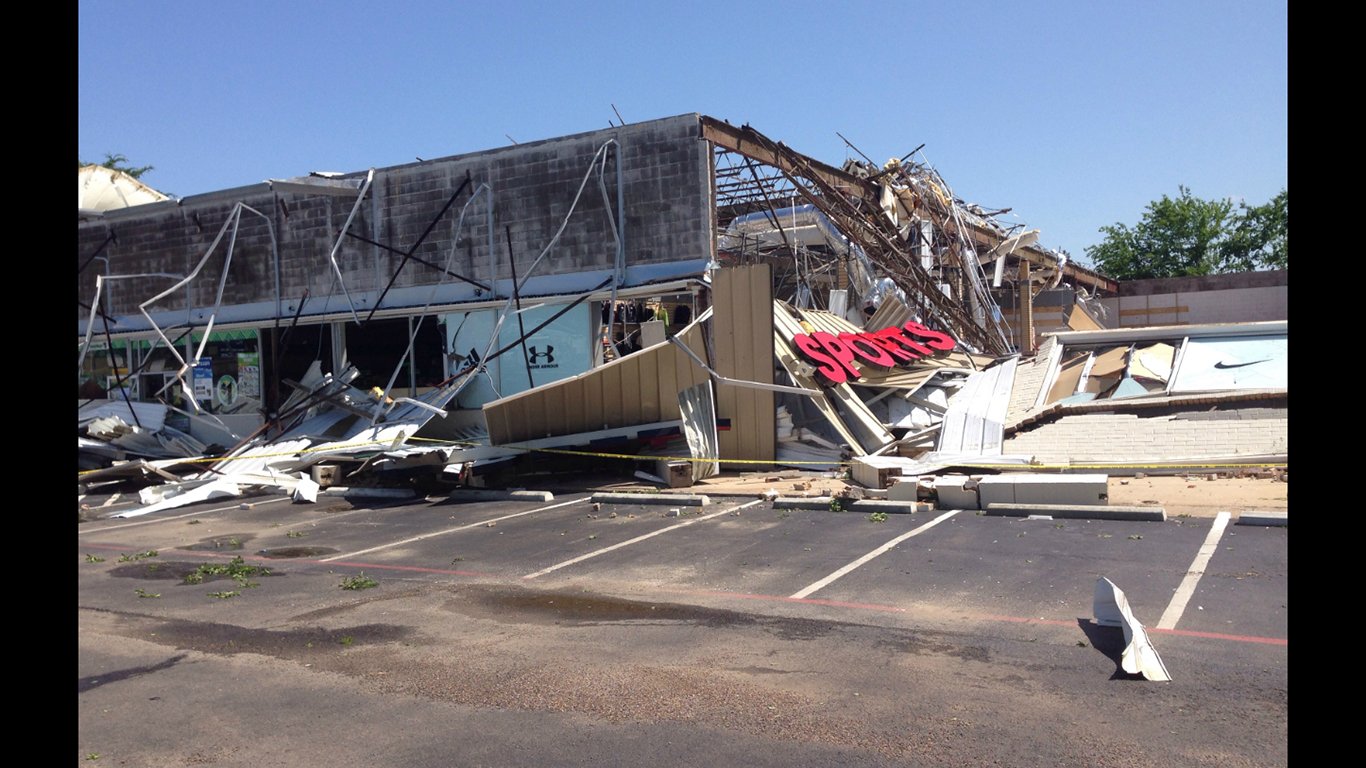
48. South/Southeast Tornadoes
> Deaths: 6
> Est. cost: $2.6 billion
> Disaster classification: Severe storm
> Date: April 2016
Severe thunderstorms that lasted from April 26 to May 2, 2016, left $2.6 billion in damage from hail, high winds, and tornadoes in the South and Southeastern United States. Affected states included Kentucky, Louisiana, Missouri, and Texas.

47. Mississippi River flooding
> Deaths: 7
> Est. cost: $3.5 billion
> Disaster classification: Flooding
> Date: April-May 2011
Steady rainfall in the Ohio Valley in early spring 2011 — 300% more than normal — in addition to melting snowpack, lead to disastrous flooding along the Mississippi River in the spring of 2011. The flooding killed seven and caused $371.2 million in damage in Memphis, Tennessee, $580 in damage to agriculture in Arkansas, and another $928 million in damage to agriculture in Mississippi.
[in-text-ad-2]
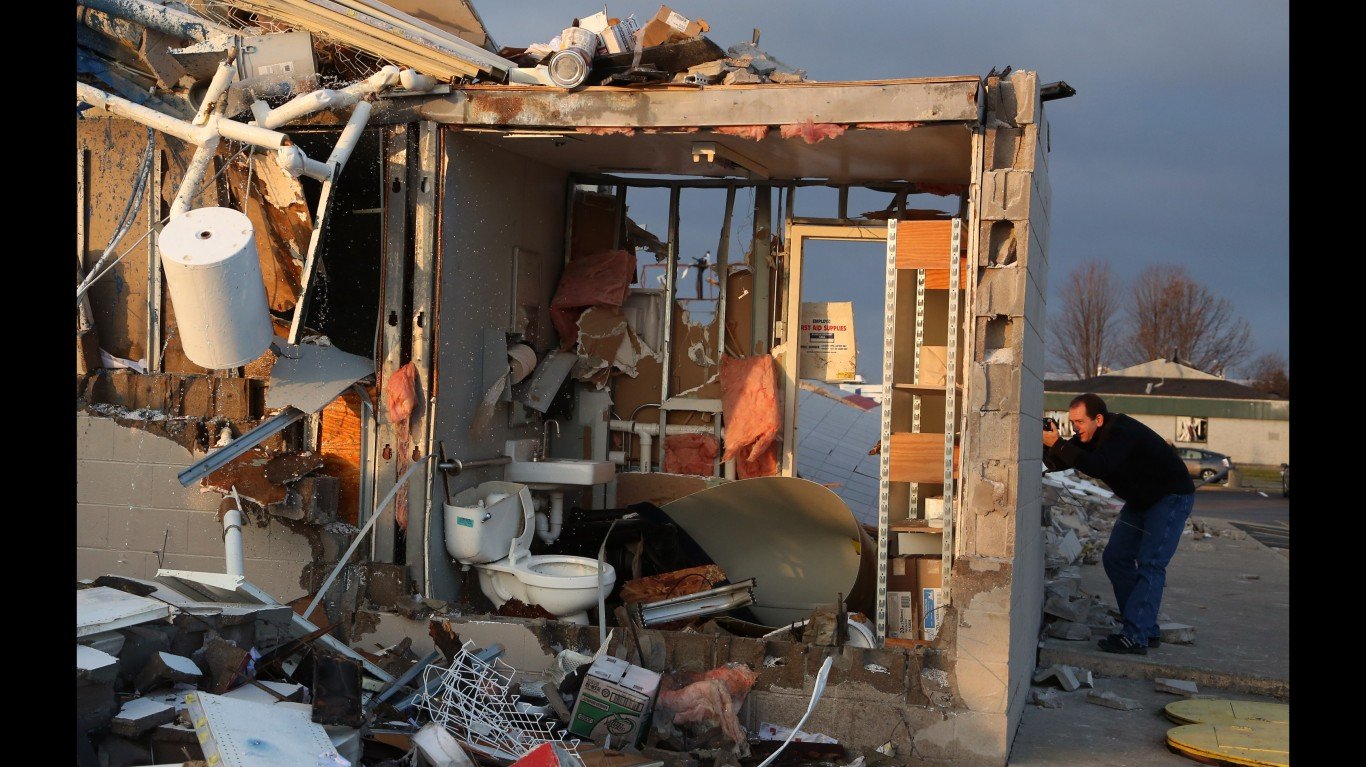
46. Ohio Valley Tornadoes
> Deaths: 8
> Est. cost: $1.2 billion
> Disaster classification: Severe storm
> Date: November 2013
Late in the tornado season, on Nov. 17, 2013, 70 confirmed tornadoes hit the Ohio Valley, causing $1.2 billion in damage and killing eight. The tornadoes touched down in six states, including Kentucky, Michigan, Missouri, and Ohio, and caused the most damage in Indiana and Illinois.
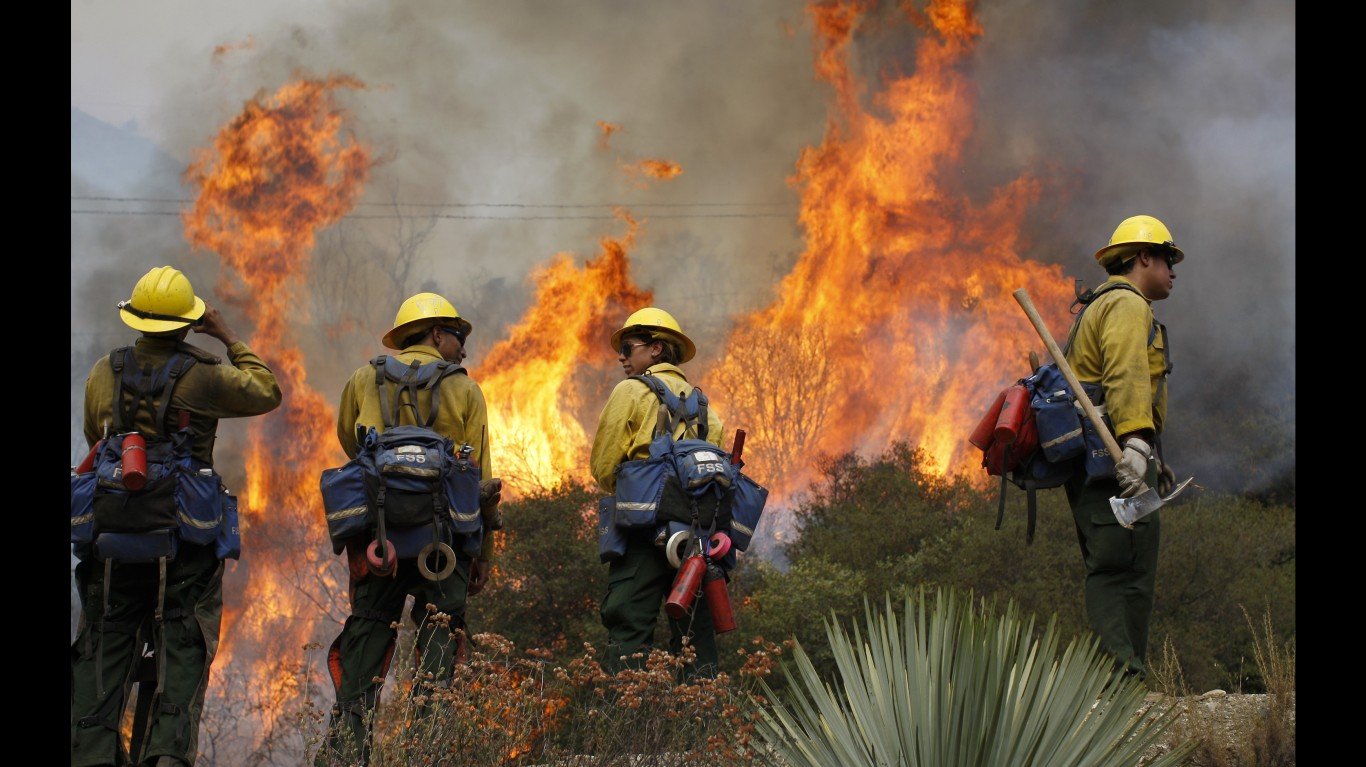
45. Western Wildfires
> Deaths: 8
> Est. cost: $2.0 billion
> Disaster classification: Wildfire
> Date: Summer-Fall 2012
Wildfires raged across more than 9.2 million acres, primarily in eight western states — Colorado, Idaho, Wyoming, Montana, California, Nevada, Oregon, and Washington — from June through November 2012. The fires persisted due to dryness, low humidity, and windy conditions. Heat was also a factor, with Nevada reporting its warmest August on record to up to that point and Colorado and Wyoming reporting their warmest summers since 1895.
[in-text-ad]
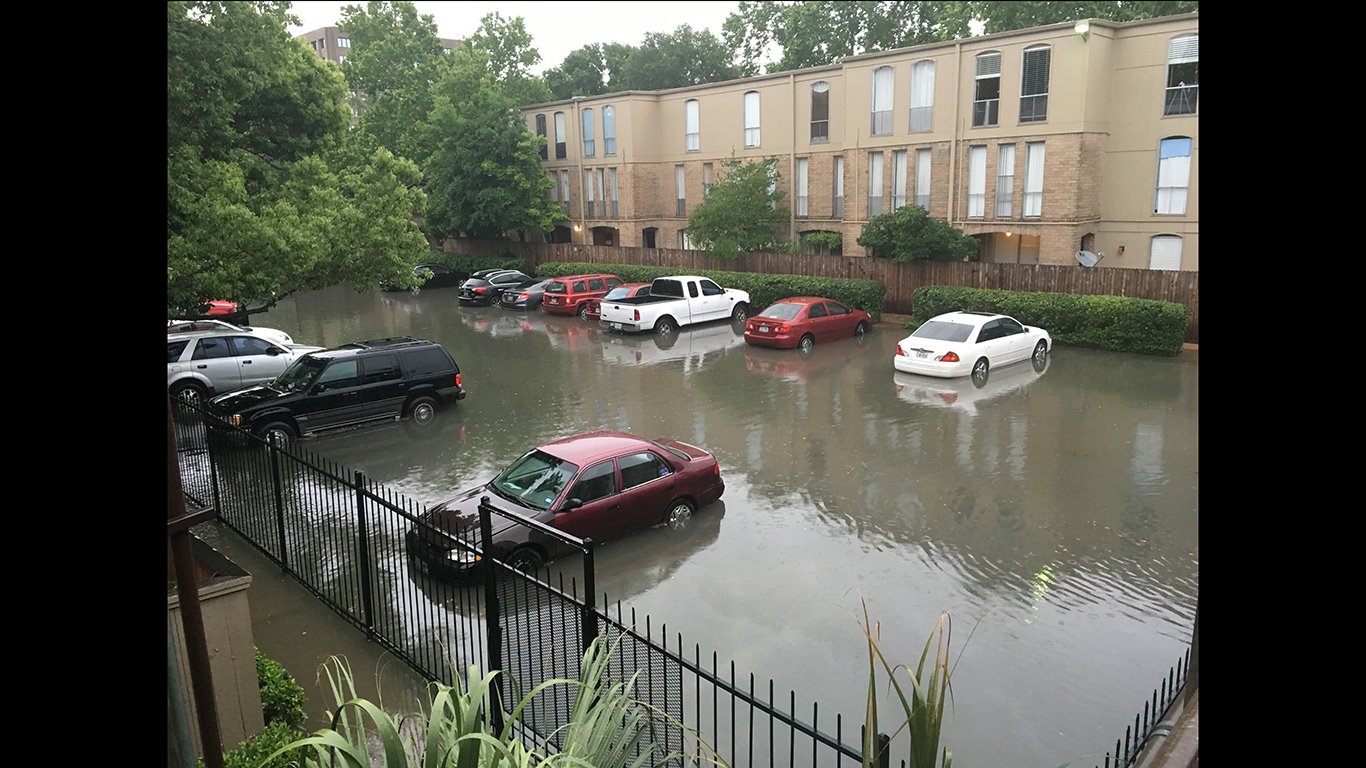
44. Houston Flooding
> Deaths: 8
> Est. cost: $2.9 billion
> Disaster classification: Flooding
> Date: April 2016
In mid-April 2016, 17 inches of rainfall lead to the worst flooding to date at the time since the city was hit by Tropical Storm Allison in 2001. The flooding damaged thousands of homes and businesses and lead to eight deaths and over 1,800 high-water rescues.

43. Southern Plains Flooding
> Deaths: 8
> Est. cost: TBD
> Disaster classification: Flooding
> Date: May 2019
Historic flooding impacted vast swaths of the South and Plains States in May 2019. Roadways, bridges, dams, and agriculture were affected in several states, including Oklahoma, Nebraska, Missouri, Illinois, Kansas, Arkansas, Mississippi, and Louisiana. The flooding also lead to high water levels on the Mississippi River and disrupted industrial barge traffic. The flooding killed eight people, and the total economic toll remains to be seen.
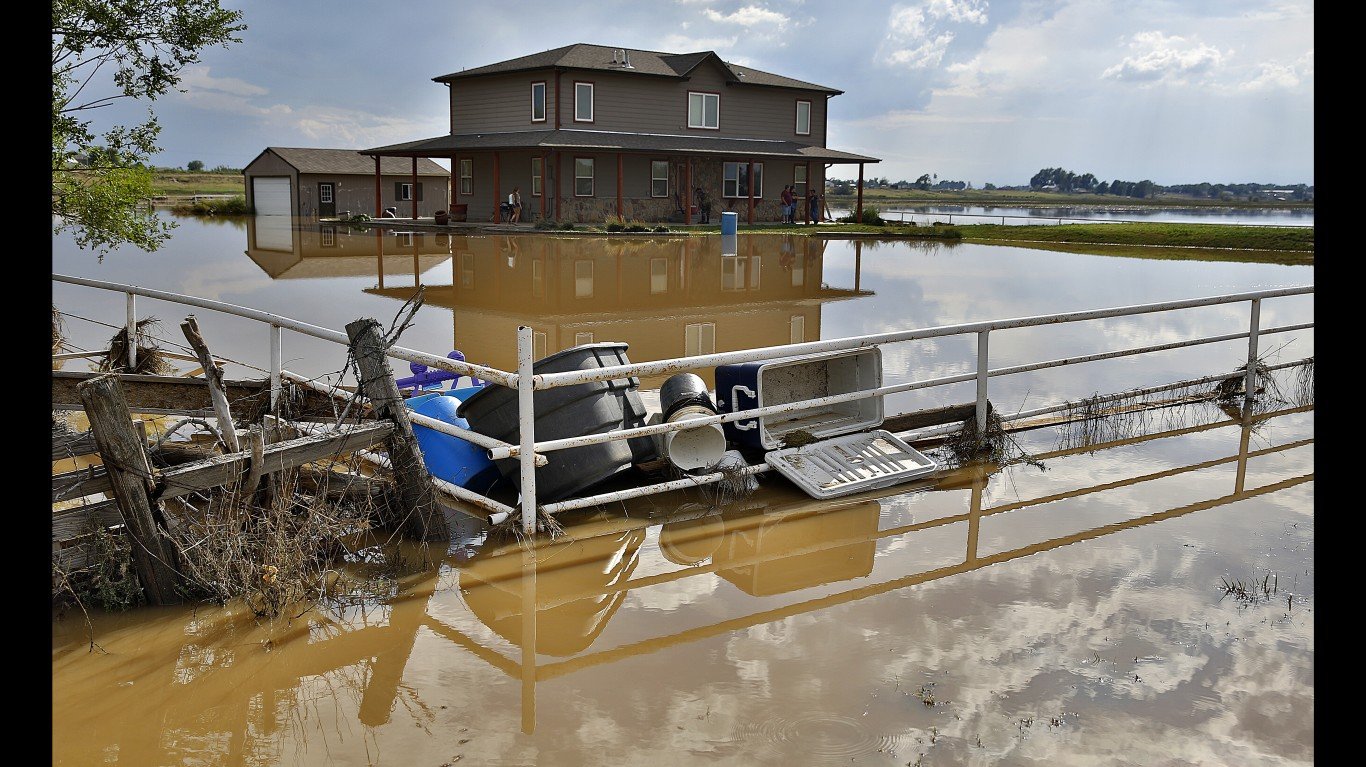
42. Colorado Flooding
> Deaths: 9
> Est. cost: $1.7 billion
> Disaster classification: Flooding
> Date: September 2013
Parts of Colorado surrounding Denver, including Aurora and Boulder, were hit with record rainfall from Sept. 10-16 in 2013. Parts of the state reported over 15 inches of rain over those days. The flooding lead to nine deaths and destroyed homes, businesses, and transportation infrastructure.
[in-text-ad-2]
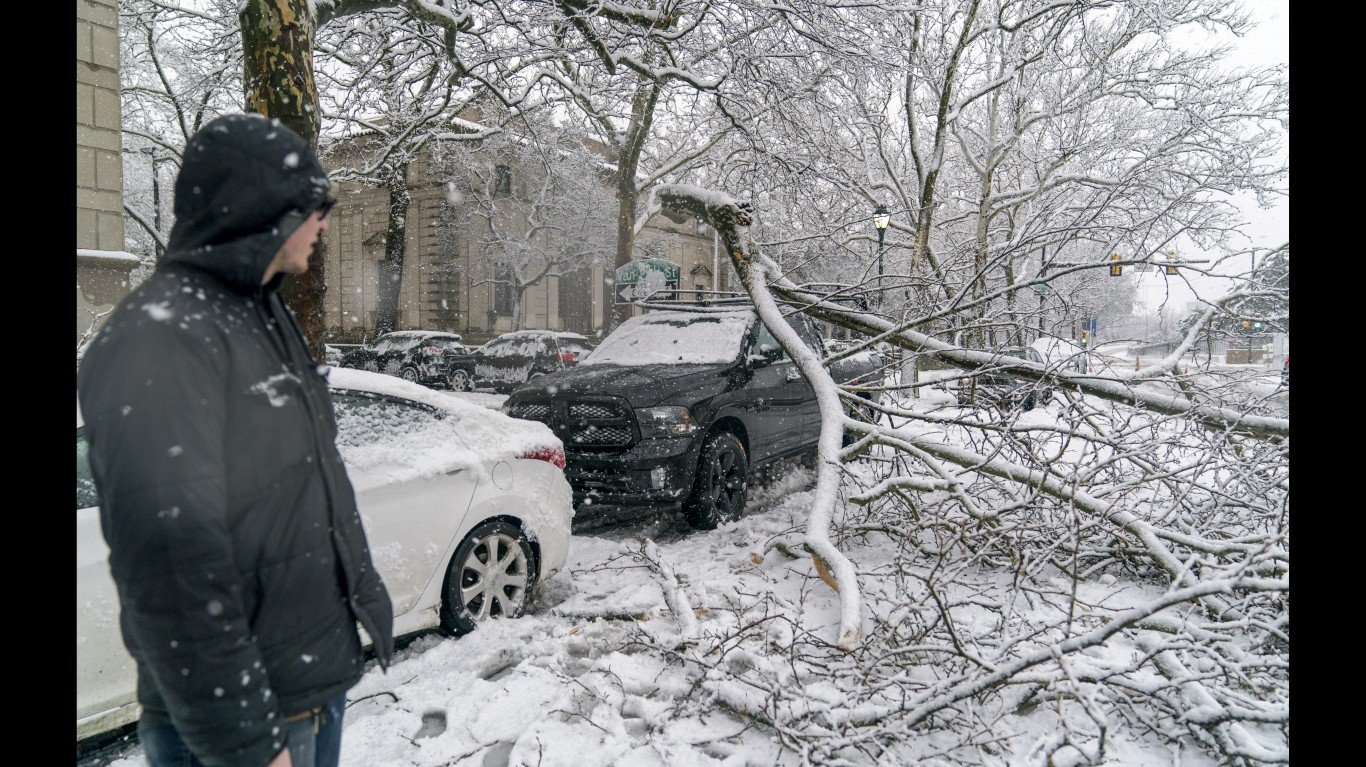
41. Northeast Winter Storm
> Deaths: 9
> Est. cost: $2.3 billion
> Disaster classification: Winter storm
> Date: March 2018
In March 2018, 10 states across the Northeast and Mid-Atlantic were slammed with a winter storm. The nor’easter brought high winds and heavy snowfall that killed nine and resulted in $2.3 billion in damage and heavy coastal erosion.
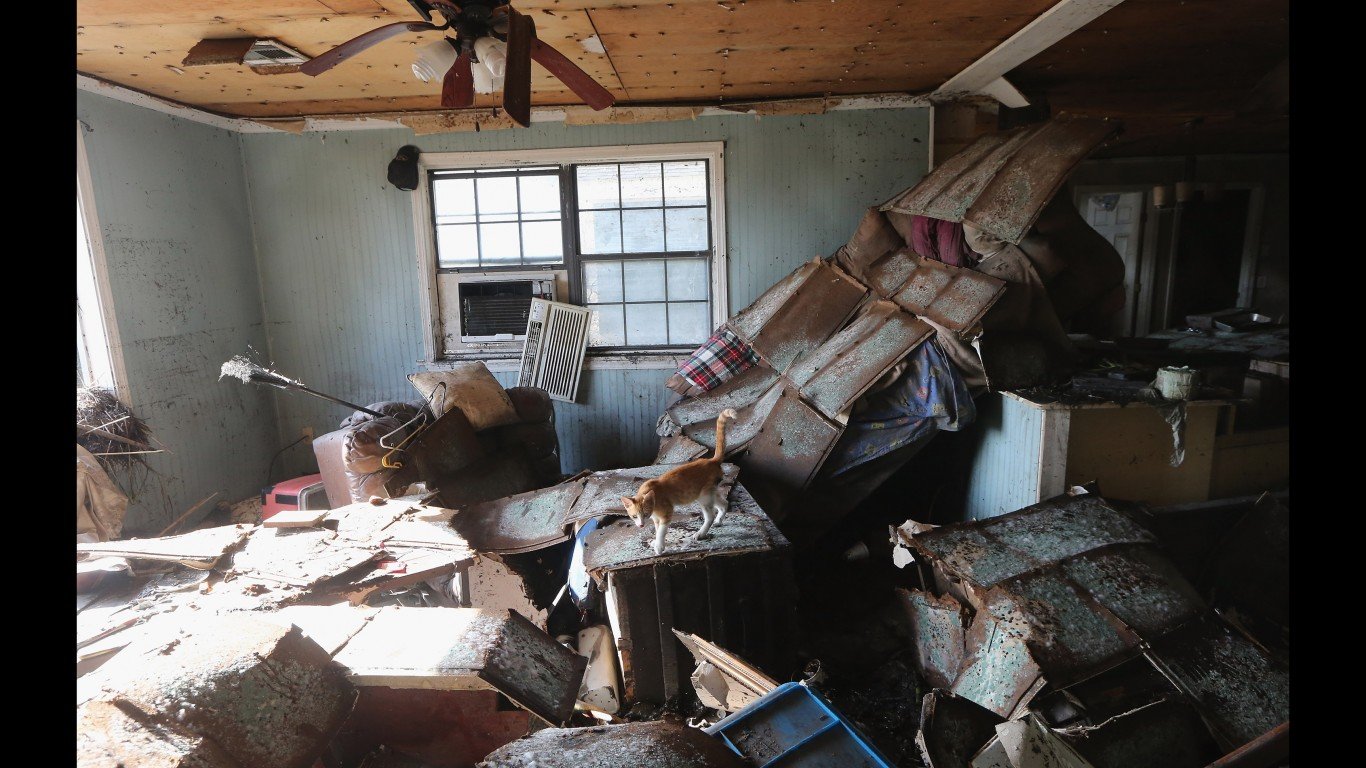
40. Hurricane Isaac
> Deaths: 9
> Est. cost: $3.1 billion
> Disaster classification: Tropical cyclone
> Date: August 2012
Hurricane Isaac was a large, slow moving storm that affected several southeastern states: Mississippi, Alabama, Florida, and most severely, Louisiana. The storm brought 20 inches of rain to New Orleans and lead to a total of nine deaths in the United States. Before making landfall in the United States, the storm was blamed for 24 deaths in Haiti and five in the Dominican Republic.
[in-text-ad]
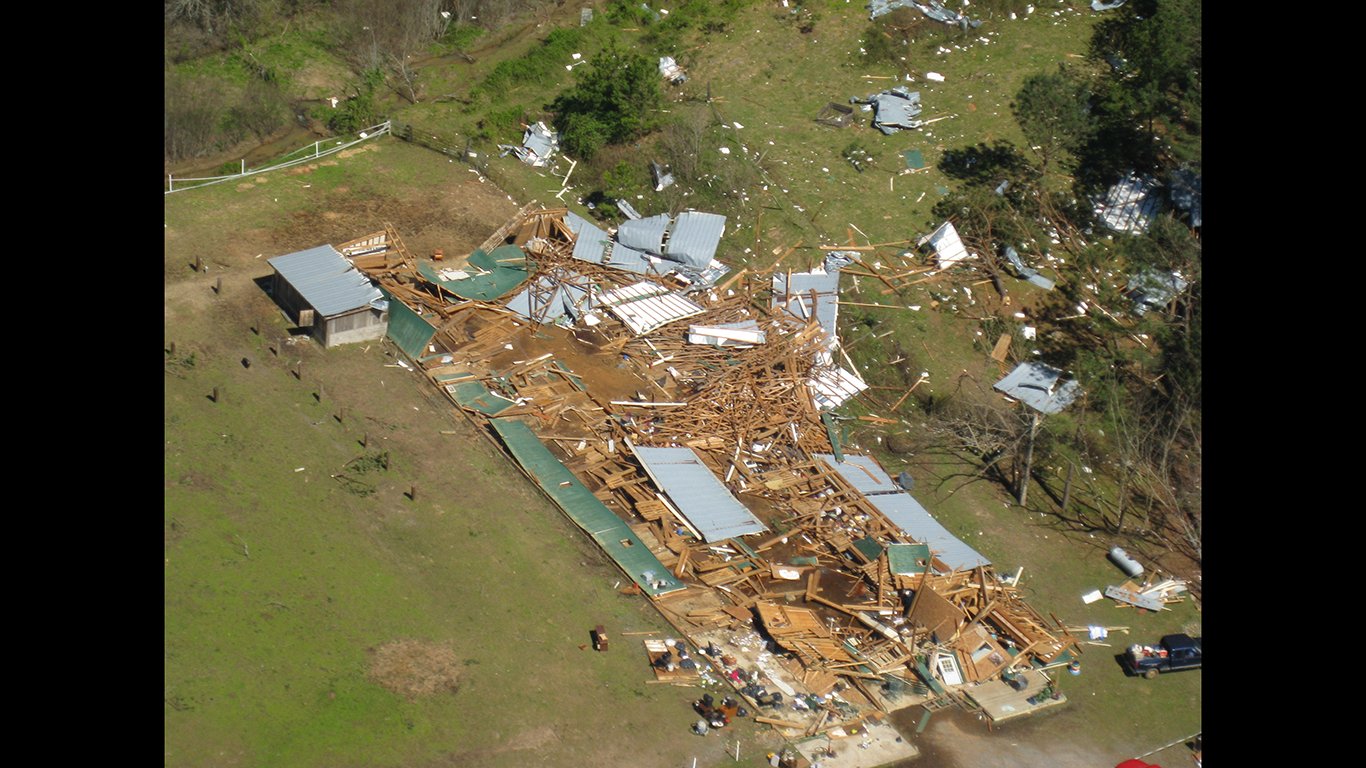
39. Midwest/Southeast Tornadoes
> Deaths: 9
> Est. cost: $3.2 billion
> Disaster classification: Severe storm
> Date: April 2011
On April 4 and 5 of 2011, an estimated 46 tornadoes tore through parts of nine states — Kansas, Missouri, Iowa, Illinois, Wisconsin, Kentucky, Georgia, Tennessee, North Carolina, and South Carolina. The storms lead to nine deaths and caused $3.2 billion in damage
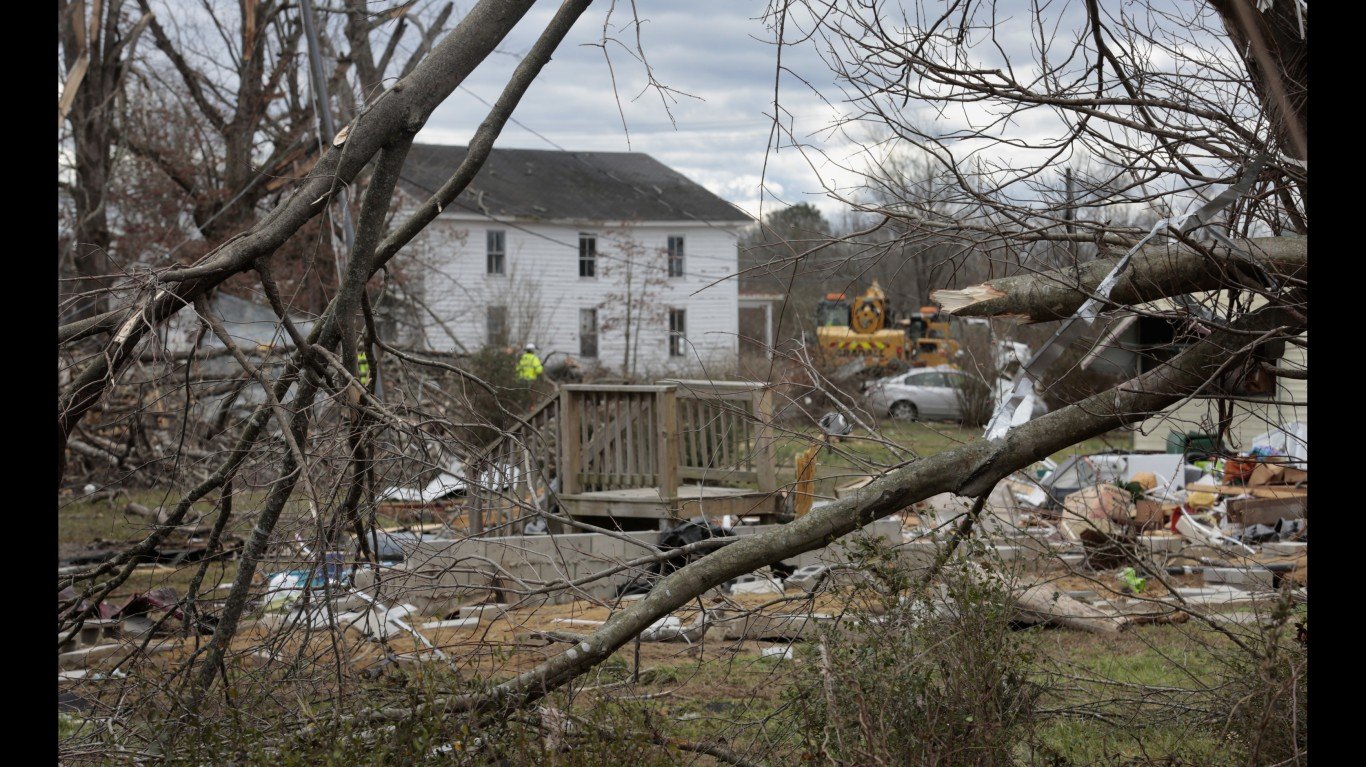
38. Southeast and Eastern Tornadoes
> Deaths: 10
> Est. cost: $1.1 billion
> Disaster classification: Severe storm
> Date: February 2016
Over two days in February 2016, severe storms and at least 50 confirmed tornadoes ripped across the east coast and as far west as Texas and as far east as Connecticut and Massachusetts. The storms wrought $1.1 billion in damage and resulted in 10 deaths.
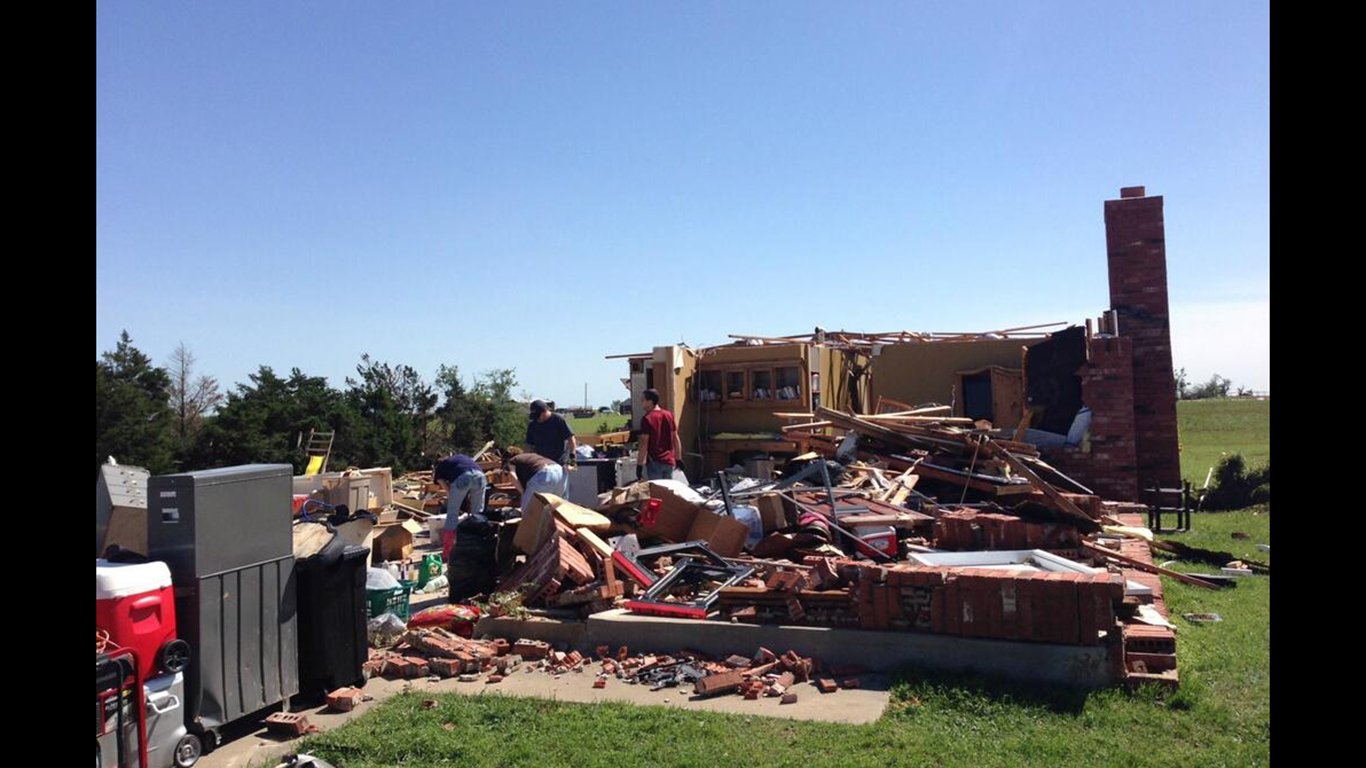
37. Midwest/Plains/Northeast Tornadoes
> Deaths: 10
> Est. cost: $2.0 billion
> Disaster classification: Severe storm
> Date: May 2013
Some 92 tornadoes were confirmed across Illinois, Indiana, Kansas, MIssouri, New York, Oklahoma, and Texas between May 27 and May 31, 2013. Along with tornadoes, hail and straight-line wind lead to $2.0 billion in damage. Most of the fatalities from the storms occurred in and around El Reno, Oklahoma.
[in-text-ad-2]
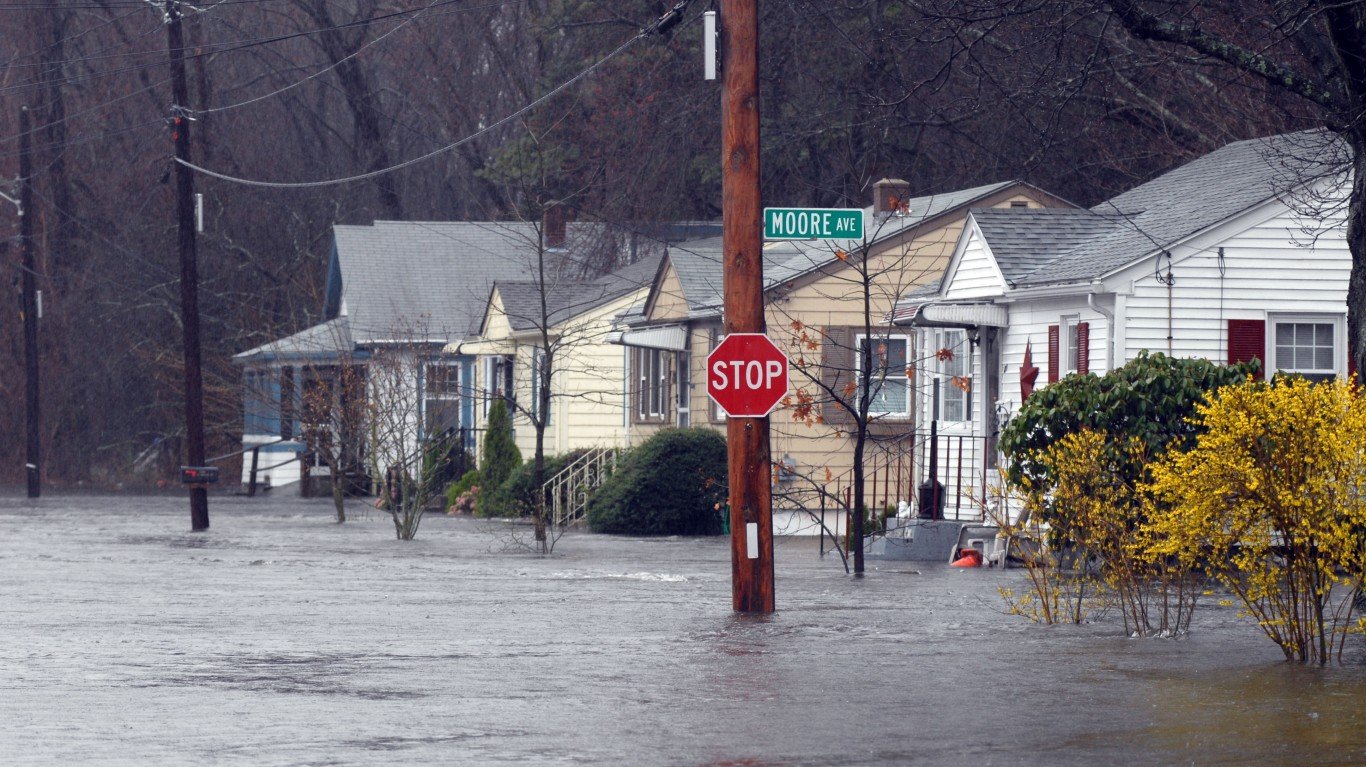
36. Northeast Flooding
> Deaths: 11
> Est. cost: $2.2 billion
> Disaster classification: Flooding
> Date: March 2010
Multiple nor’easters struck six states in the northeast over the month of March in 2010. The first dropped as much as 10 inches of rain in parts of the region in combination with wind gusts of up to 70 mph, leading Massachusetts, Rhode Island, and Connecticut to declare states of emergency. A second storm that hit two weeks later broke monthly precipitation records in many areas and lead to the worst flooding in Rhode Island in at least 200 years.
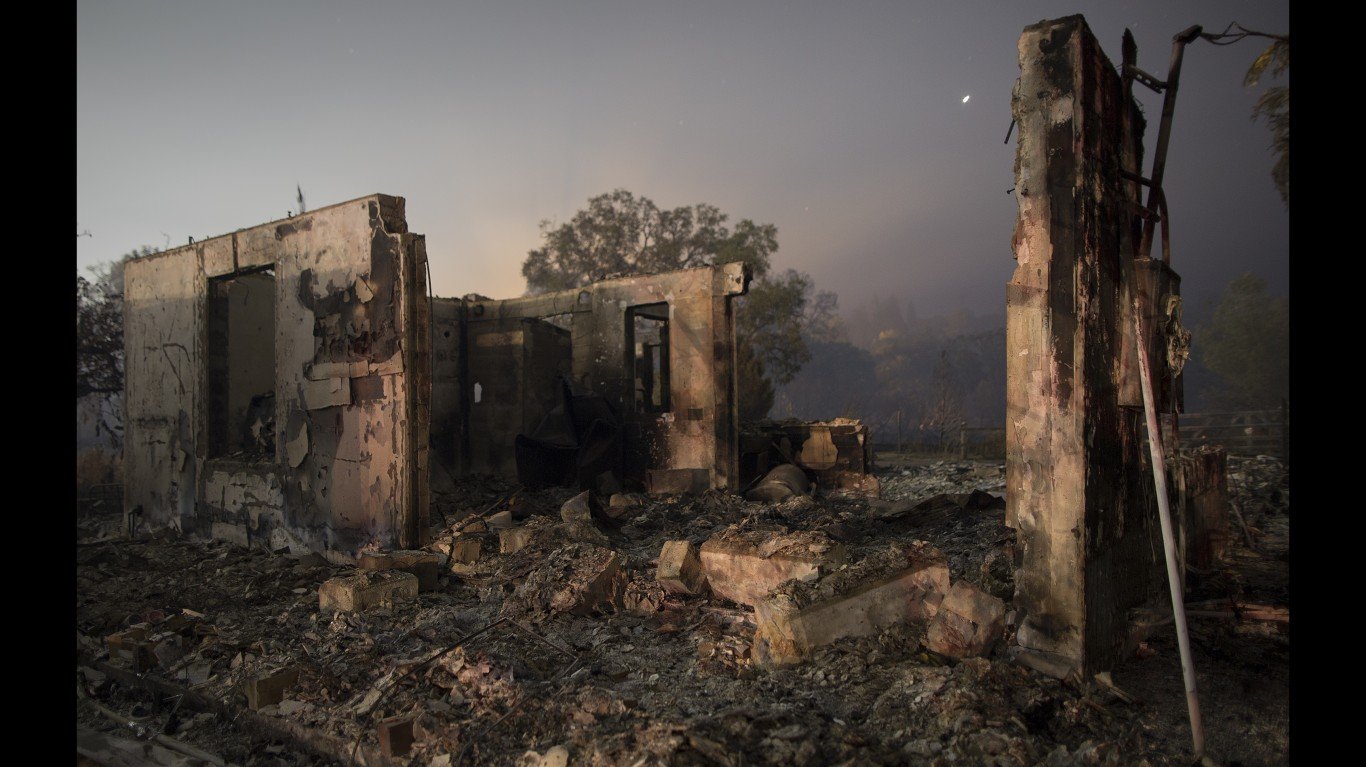
35. Western and Alaskan Wildfires
> Deaths: 12
> Est. cost: $3.3 billion
> Disaster classification: Wildfire
> Date: Summer-Fall 2015
From June through November 2015, wildfires burned over 10.1 million acres in the Western United States — the most to that date since record keeping began in 1960. The most extensive fires took place in Alaska, where over 5 million acres burned. But the most damage was in California, where over 2,500 structures were destroyed. By the time the fires stopped, 12 people had lost their lives and the damage was estimated at $3.3 billion.
[in-text-ad]
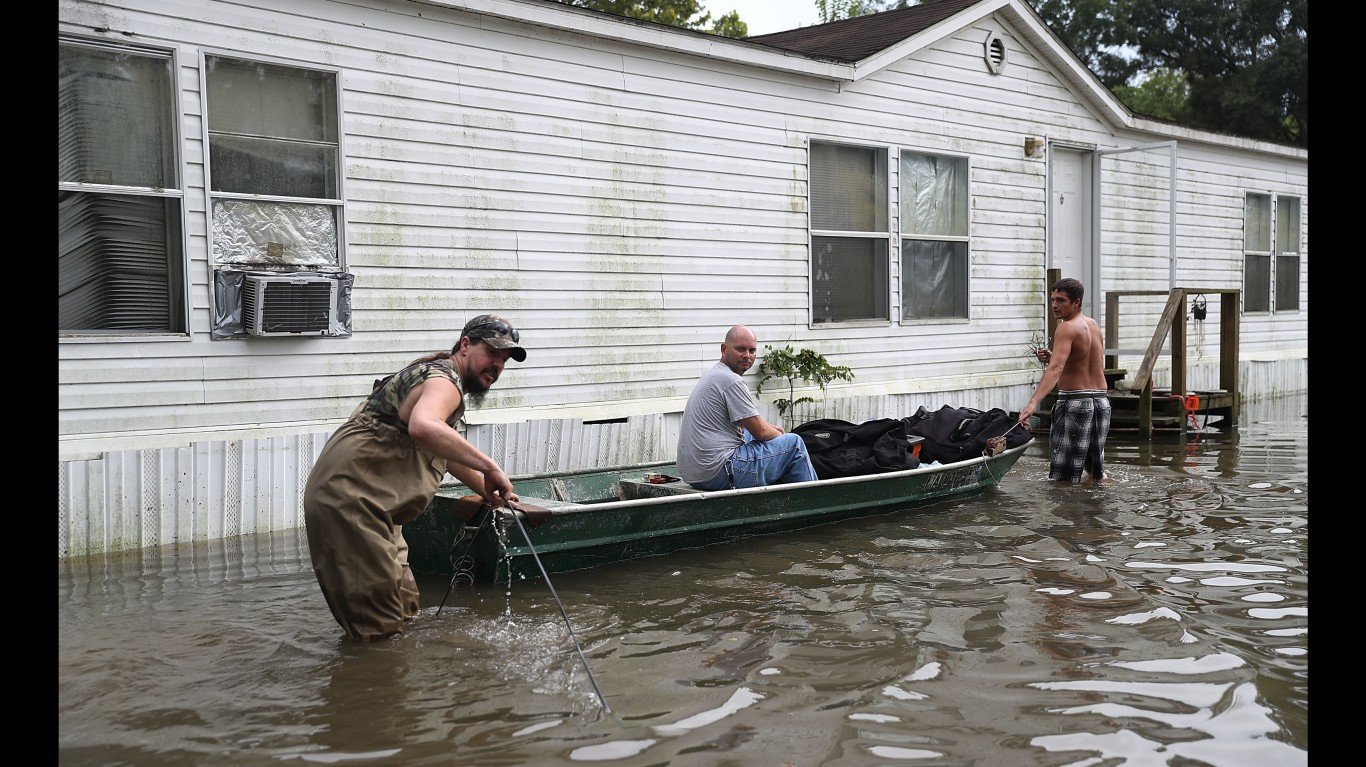
34. Louisiana Flooding
> Deaths: 13
> Est. cost: $10.8 billion
> Disaster classification: Flooding
> Date: August 2016
From August 12 through 15, 2016, a storm dropped over 30 inches of rain in parts of Louisiana. The odds of such heavy precipitation make it a 1 in 500 year event. Watson, Louisiana, was the hardest hit, and the flooding resulted in 13 deaths and over 30,000 rescues. Over 50,000 homes, 100,000 vehicles, and 20,000 businesses were damaged or destroyed, resulting in nearly $11 billion in damage.
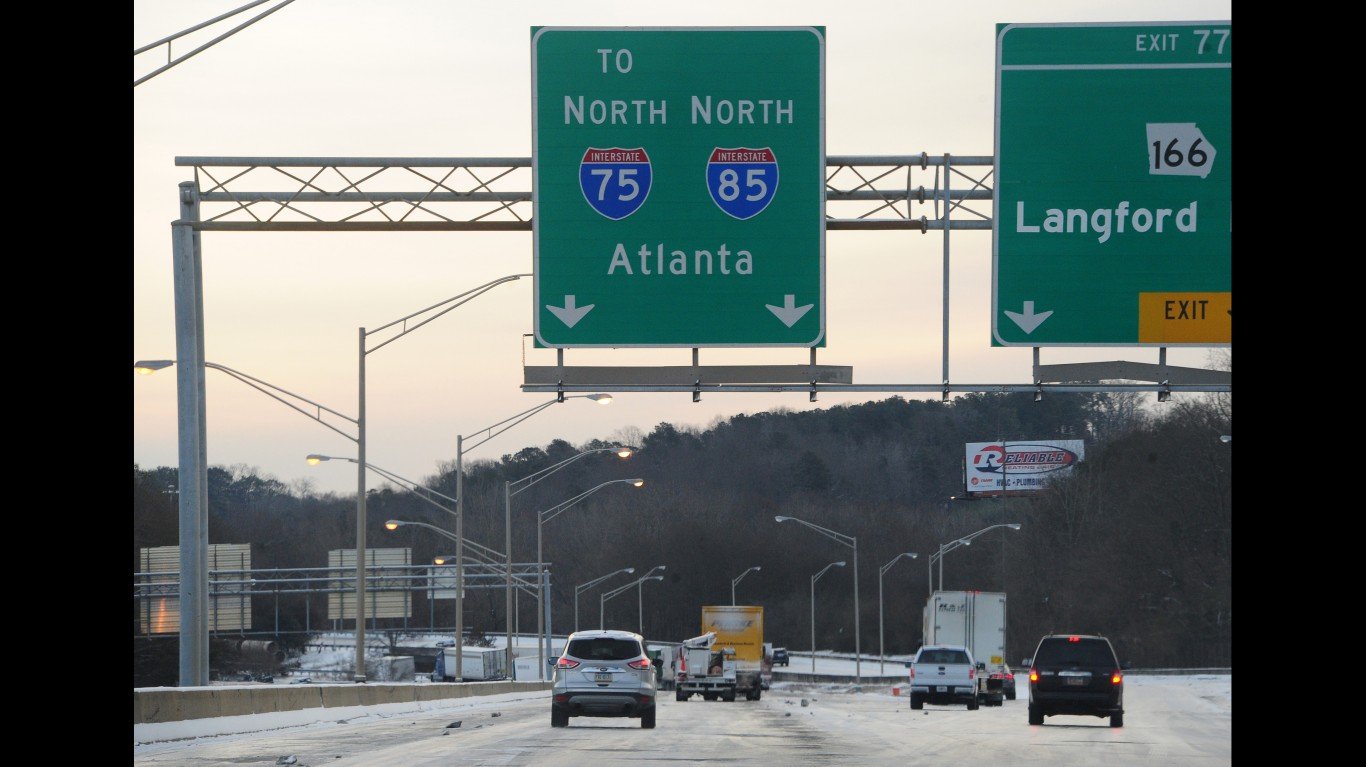
33. Midwest/Southeast/Northeast Winter storm
> Deaths: 16
> Est. cost: $2.4 billion
> Disaster classification: Winter storm
> Date: January 2014
A winter storm system that swept across 17 states from Jan. 5 through 8, 2014, resulted in 16 deaths and $2.4 billion in damage. The storm affected states in the Northeast and Midwest that are no strangers to winter weather — but also states in the Southeast like Alabama, Georgia, and South Carolina that are less equipped for such winter weather events.
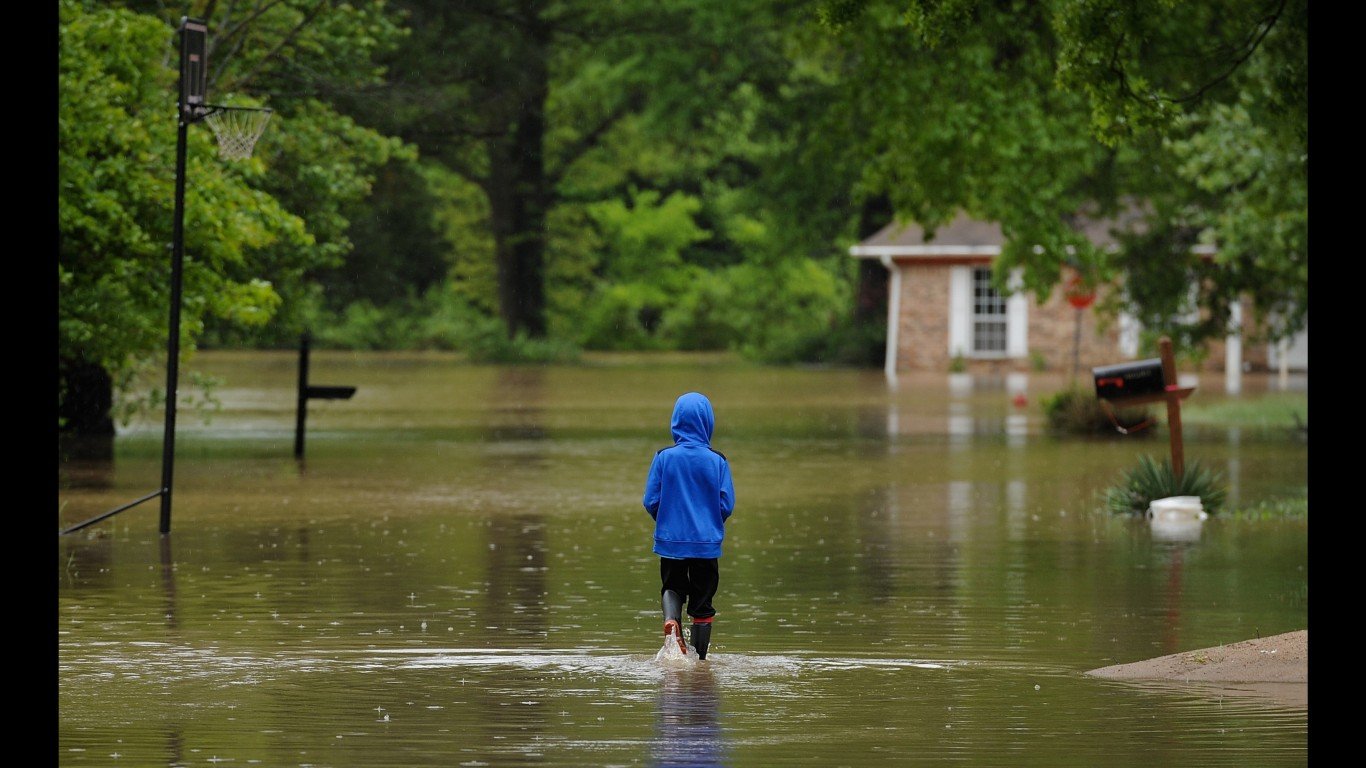
32. Missouri and Arkansas Flooding and Central Severe Weather
> Deaths: 20
> Est. cost: $1.7 billion
> Disaster classification: Flooding
> Date: May 2017
A period of heavy rain that stretched from April 25 to May 7, 2017, dropped up to 15 inches and inundated levees in parts of the Midwest. The most severe flooding occurred in Missouri, Arkansas, and southern Illinois.
[in-text-ad-2]

31. Western/Southeast Wildfires
> Deaths: 21
> Est. cost: $2.6 billion
> Disaster classification: Wildfire
> Date: Summer-Fall 2016
The second half of 2016 was a particularly active season for wildfires in the western and southeastern parts of the United States. Drought conditions in California and parts of the Southeast provided conditions for the fires to spread. The fires were particularly bad in Gatlinburg, Tennessee, where hurricane-force winds and dry conditions made the firestorm particularly volatile. Of the 21 fatalities nationwide from the fires, 14 were in Gatlinburg.
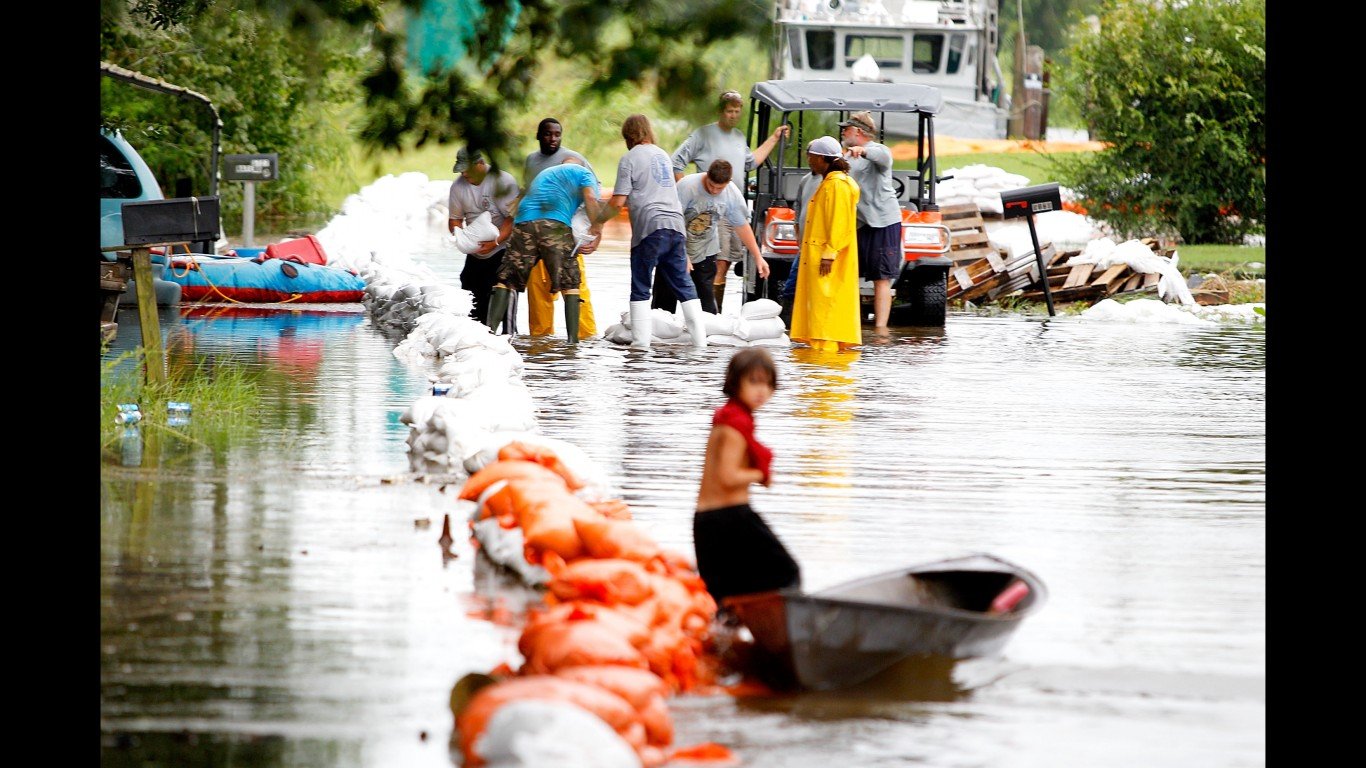
30. Tropical Storm Lee
> Deaths: 21
> Est. cost: $2.9 billion
> Disaster classification: Tropical cyclone
> Date: September 2011
In early September 2011, Tropical Storm Lee made landfall, dumping 10-15 inches of rain in southern Mississippi and Alabama and parts of the Florida Panhandle. Lee brought a 3- to 5-foot storm surge and moved northeast, bringing record flooding to parts of the Northeast and mid-Atlantic, hitting New York and Pennsylvania the hardest.
[in-text-ad]
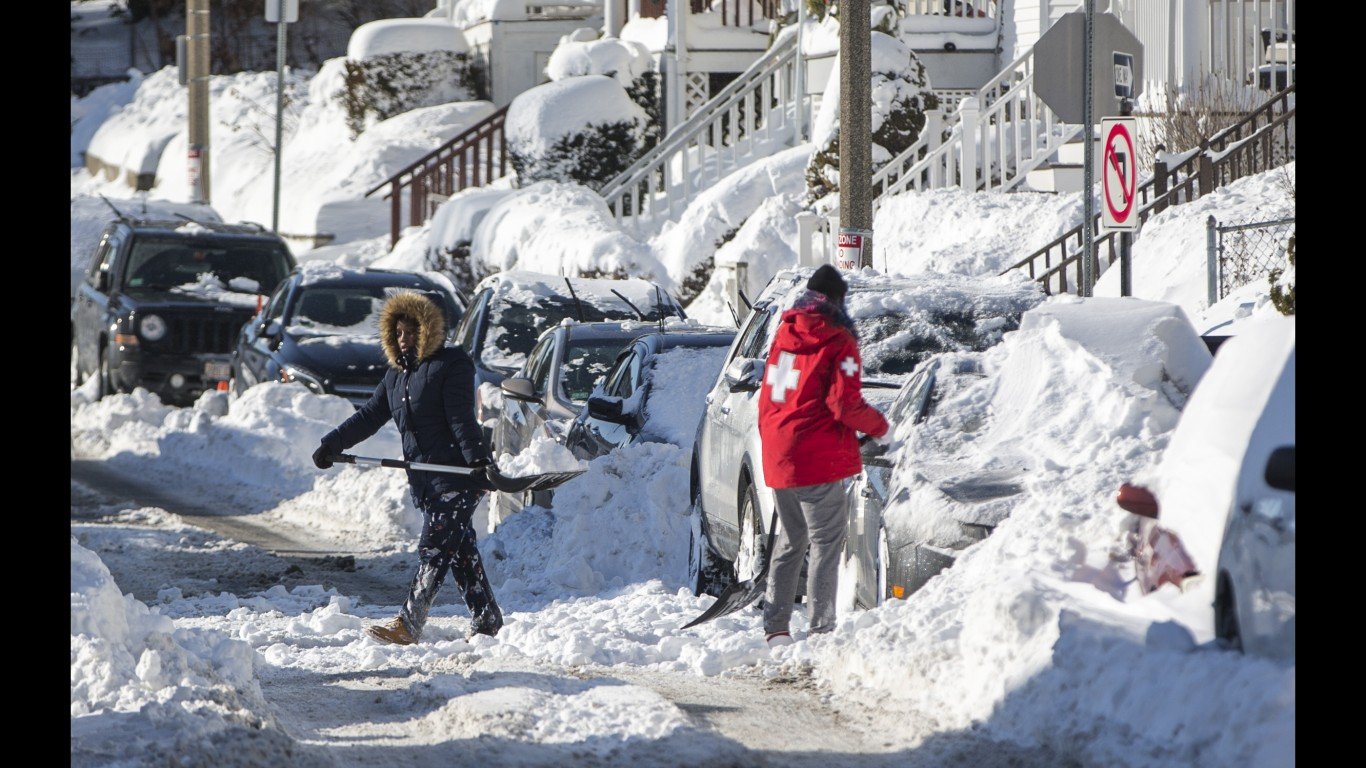
29. Central and Eastern Winter Storm
> Deaths: 22
> Est. cost: $1.1 billion
> Disaster classification: Winter storm
> Date: January 2018
From Jan. 3 through 5 of 2018, a nor’easter — dubbed a “bomb cyclone” — covered nearly the entire East Coast in a sheet of snow. The storm brought over a foot of snow to parts of New England, and even parts of Florida were dusted with snow. By the end, 22 people were killed and $1.1 billion in damage was reported.

28. West Virginia Flooding and Ohio Valley Tornadoes
> Deaths: 23
> Est. cost: $1.0 billion
> Disaster classification: Flooding
> Date: June 2016
A storm that raged from June 22 to 24 brought torrential rain and flooding to West Virginia and several tornadoes to the Ohio Valley. The flooding was particularly devastating, killing many and damaging or destroying over 1,500 roads and bridges.

27. Southern Tornado Outbreak and Western Storms
> Deaths: 24
> Est. cost: $1.2 billion
> Disaster classification: Severe storm
> Date: January 2017
Over the course of three days in late January 2017, 79 confirmed tornadoes hit across at least seven southern states. The event was one of the largest tornado outbreaks to occur during a winter month on record. Georgia, Florida, and Mississippi were among the states hardest hit. During the same period, high winds caused widespread damage in southern California around San Diego.
[in-text-ad-2]
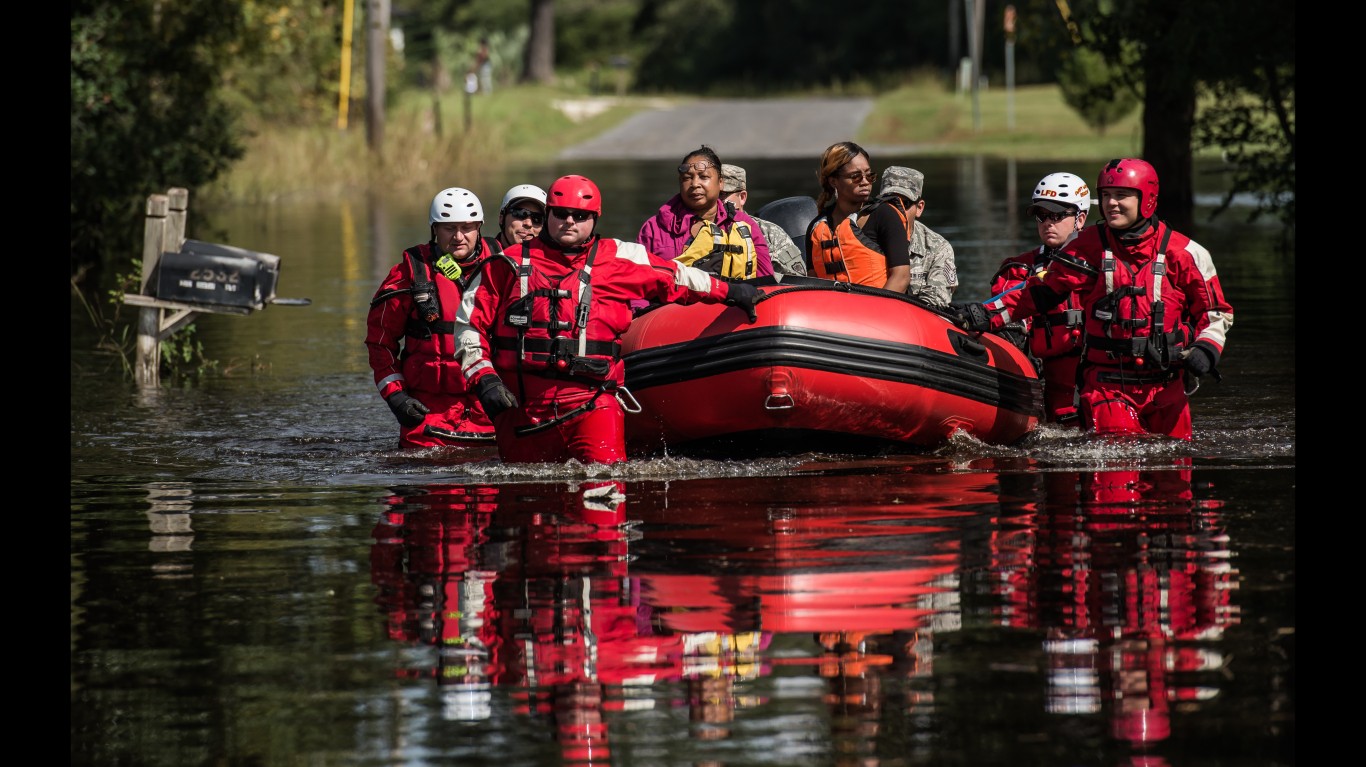
26. South Carolina and East Coast Flooding
> Deaths: 25
> Est. cost: $2.2 billion
> Disaster classification: Flooding
> Date: October 2015
In early October 2015, a low pressure system converged with moisture from Hurricane Joaquin out in the Atlantic to bring historic flooding to South Carolina. Rainfall exceeded 20 inches in parts of the state and flooding, causing major transportation routes — including parts of I-95 — to shut down. The disaster lead to 25 fatalities and $2.2 billion in damage.
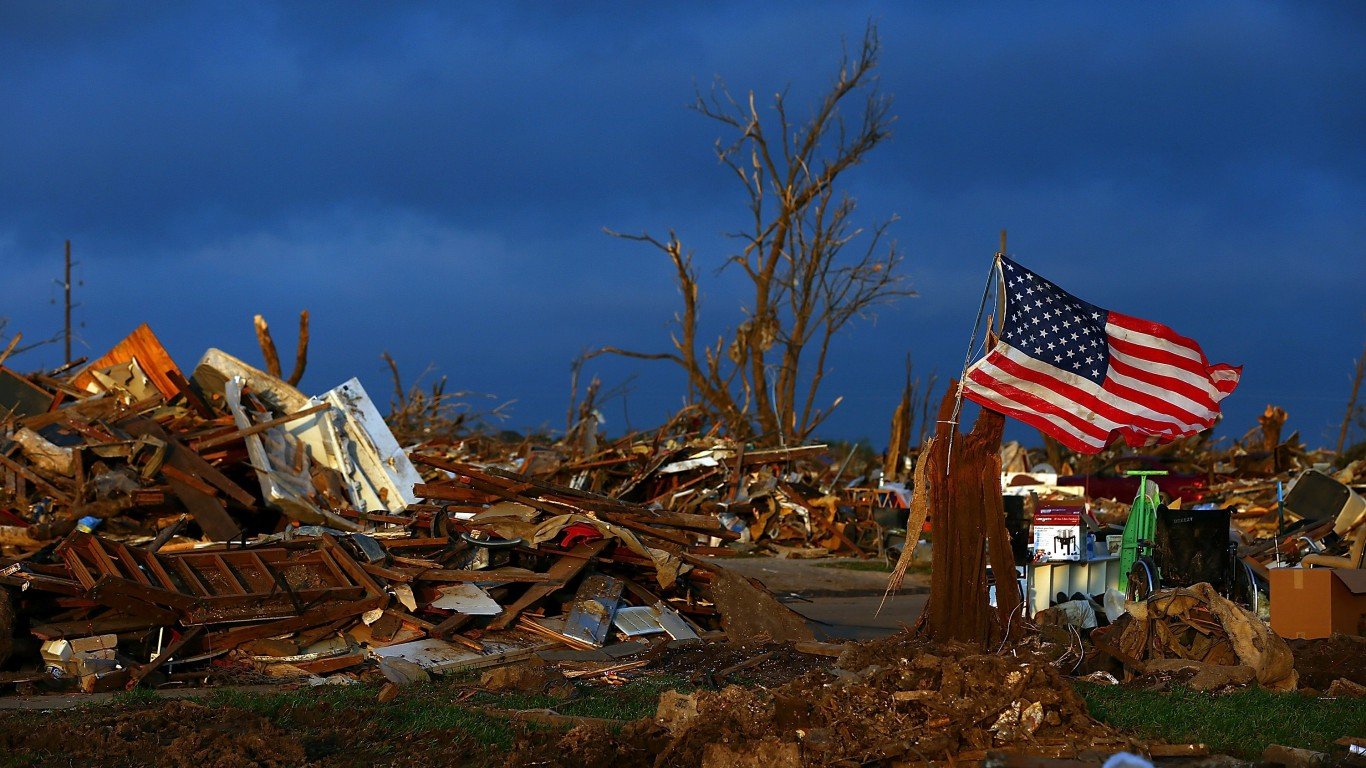
25. Midwest/Plains/East Tornadoes
> Deaths: 27
> Est. cost: $2.7 billion
> Disaster classification: Severe storm
> Date: May 2013
From May 18 to May 22, 2013, an outbreak of 59 confirmed tornadoes touched down across parts of the Midwest and Plains states considered to be in the “Tornado Alley” corridor. Much of the devastation occurred in Moore, Oklahoma, which was in the path of an EF5 tornado (one bringing wind speeds of more than 200 mph) that ultimately killed 25 people, including 10 children, many of whom were in an elementary school at the time.
[in-text-ad]
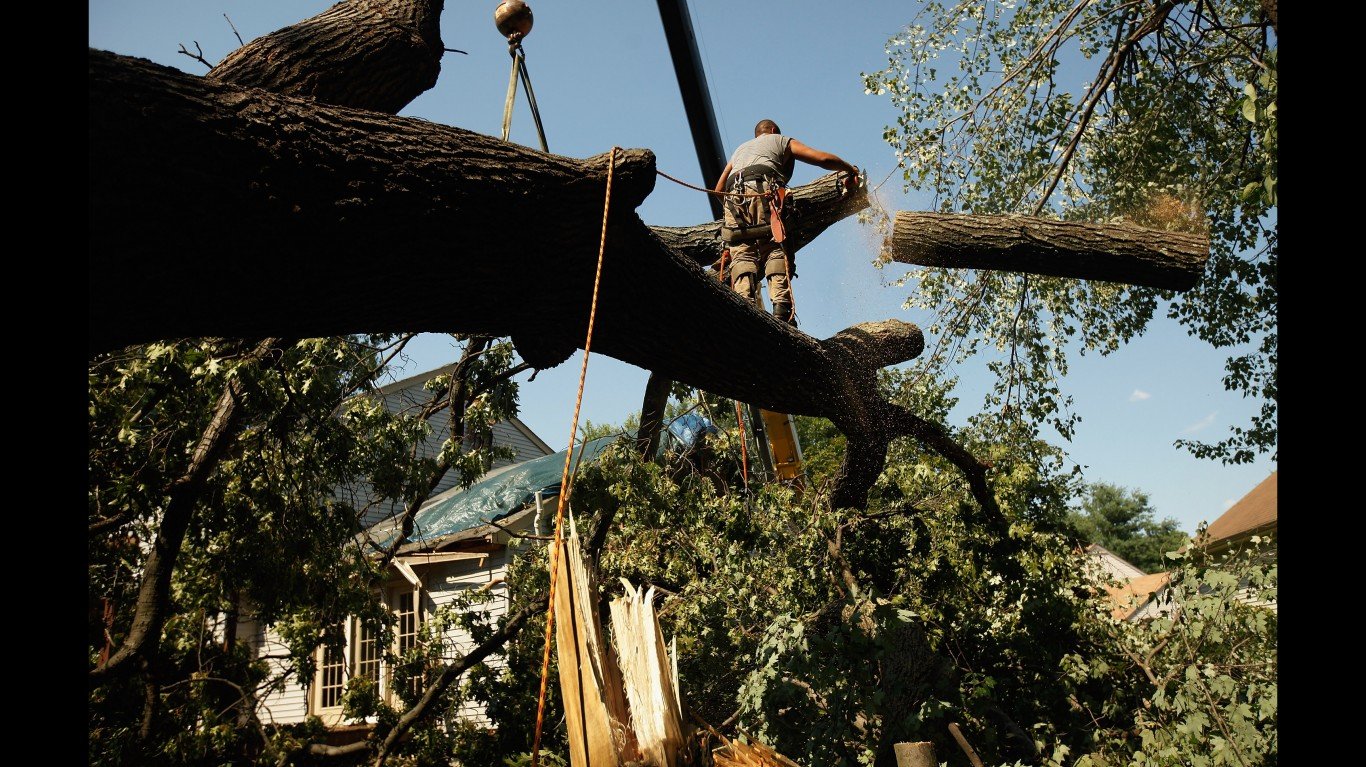
24. Plains/East/Northeast Severe Weather
> Deaths: 28
> Est. cost: $3.3 billion
> Disaster classification: Severe storm
> Date: June-July 2012
From late June to early July, a series of thunderstorms brought sustained high winds to much of the Midwest and mid-Atlantic. The storms affected at least 10 states and Washington D.C., resulting in 28 deaths and $3.3 billion in damage.
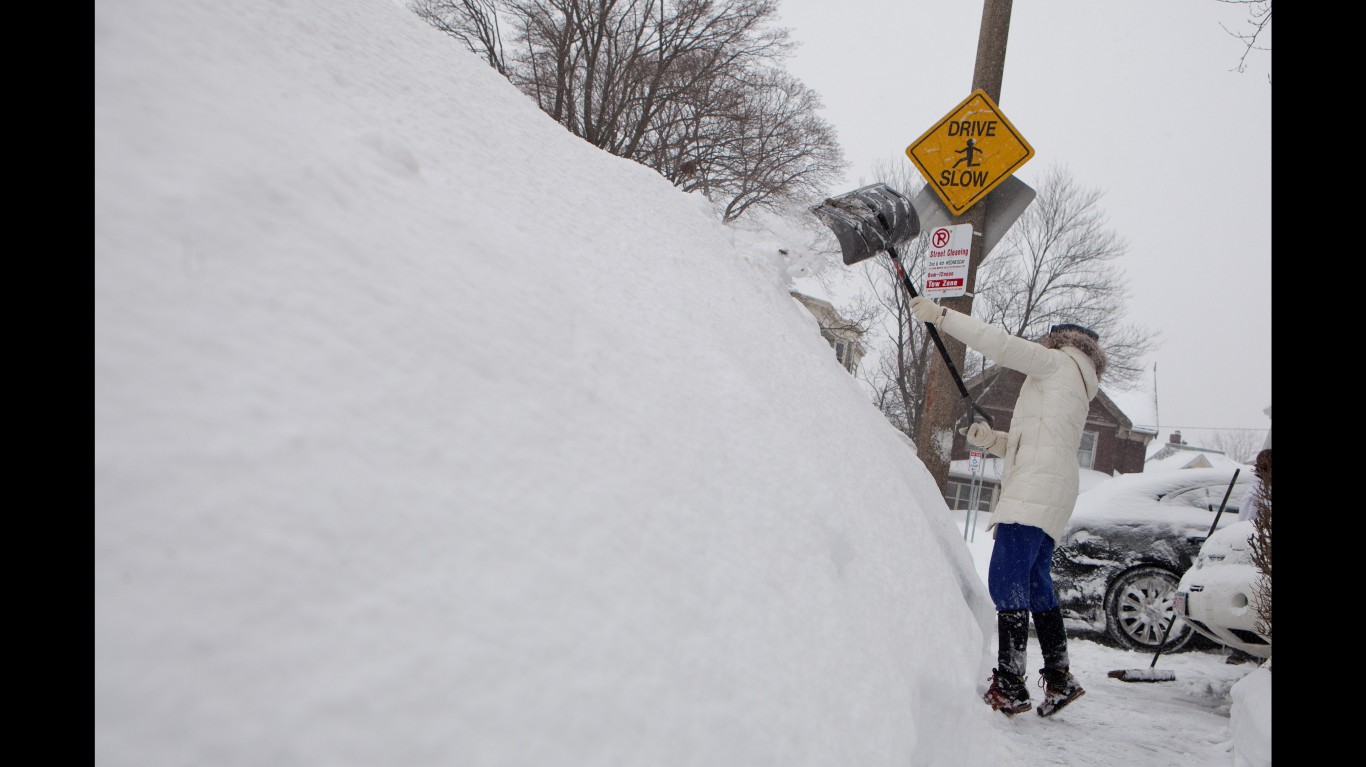
23. Central and Eastern Winter Storm, Cold Wave
> Deaths: 30
> Est. cost: $3.3 billion
> Disaster classification: Winter storm
> Date: February 2015
In mid-February 2015, a massive winter storm slammed nearly the entire eastern United States. Boston was particularly hard hit. Burying the city in feet of snow, the storm closed off roadways and transportation corridors. Of the total $3.3 billion in damage, $1.1 was in Massachusetts alone.

22. Texas and Oklahoma Flooding and Severe Weather
> Deaths: 31
> Est. cost: $2.8 billion
> Disaster classification: Flooding
> Date: May 2015
Over the course of several days in late May 2015, a slow-moving storm system dumped rain on parts of Texas and Oklahoma, resulting in severe flooding. The Blanco River in Texas swelled to more than 40 feet, causing massive property damage. Kansas, Colorado, Arkansas, Ohio, Louisiana, Georgia, and South Carolina were also affected by the storm.
[in-text-ad-2]

21. East/South Flooding and Severe Weather
> Deaths: 32
> Est. cost: $2.7 billion
> Disaster classification: Flooding
> Date: May 2010
Over several days in late April and early May 2010, six southern states were affected by severe thunderstorms that came with flooding, tornadoes, and hail. Nashville, Tennessee, was particularly hard hit. Nearly 14 inches of rain fell in a 36-hour period, more than double the previous record for the city set over 48 hours. Of the 32 people killed in the storm, 11 died in the Nashville area.
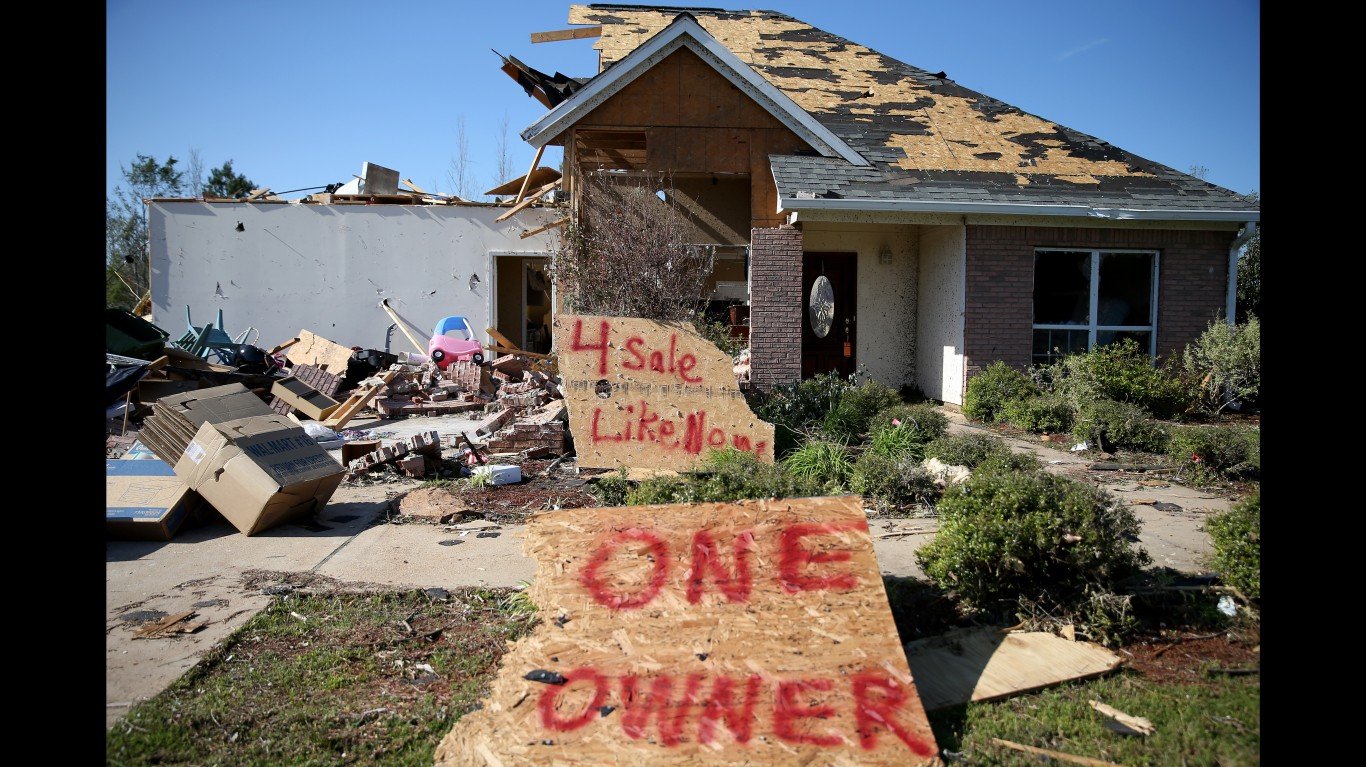
20. Midwest/Southeast/Northeast Tornadoes and Flooding
> Deaths: 33
> Est. cost: $1.9 billion
> Disaster classification: Severe storm
> Date: April 2014
Severe storms brought a record number of tornadoes and historic rainfall across much of the Southeast in late April 2014. Mississippi reported its third highest volume of tornadoes in a single day since 1950. Pensacola, Florida, reported a record two-day rainfall of over 20 inches. Officials claimed the precipitation led to the worst flooding in three decades. Another 13 states in the Midwest, mid-Atlantic, and Northeast were also affected by the storms.
[in-text-ad]
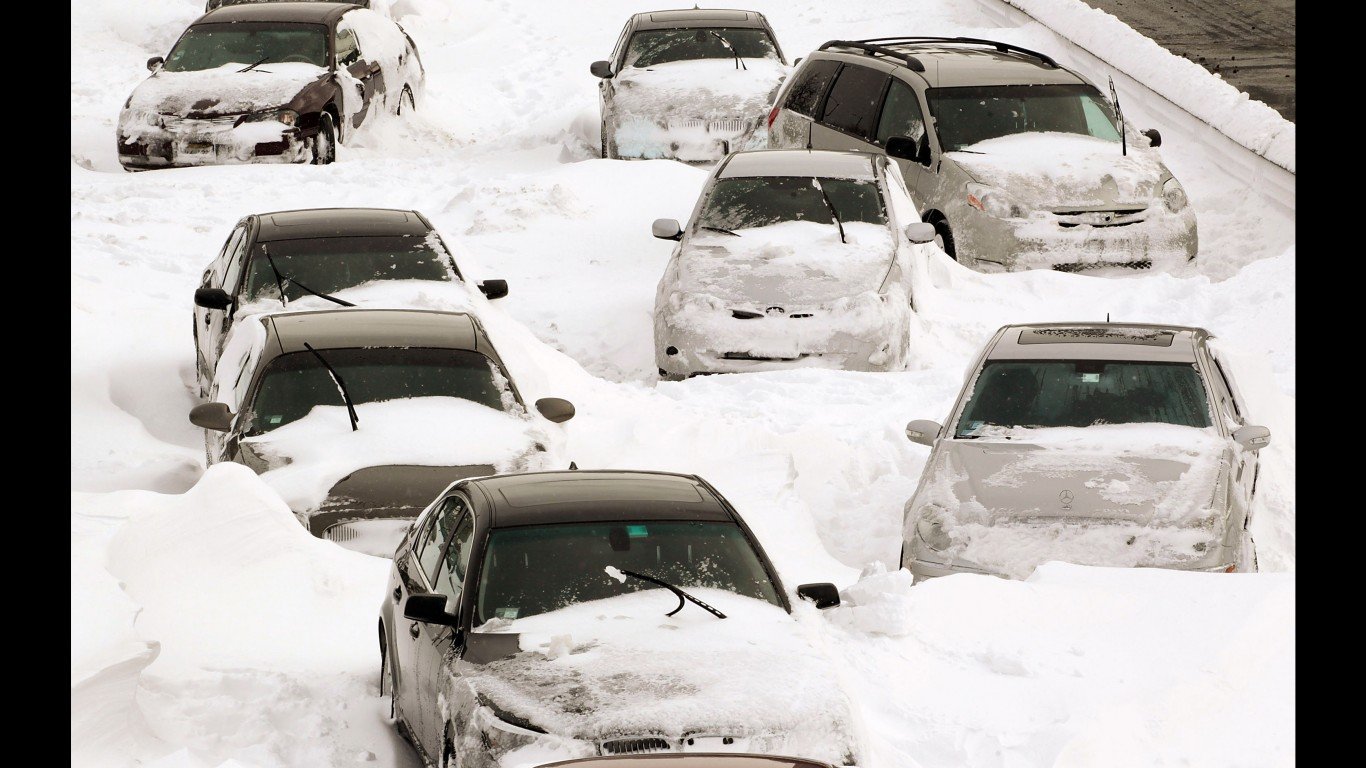
19. Groundhog Day Blizzard
> Deaths: 36
> Est. cost: $2.1 billion
> Disaster classification: Winter storm
> Date: February 2011
Much of the United States, from Texas to New England, was hit by a massive blizzard on Groundhog Day in 2011. The storm — nicknamed “Snowpocalypse” — brought Chicago to a virtual standstill, burying the city in as much as 2 feet of snow. The blizzard ranks as the third largest in Chicago’s history. Other parts of northern Illinois and northwest Indiana were also particularly hard hit.
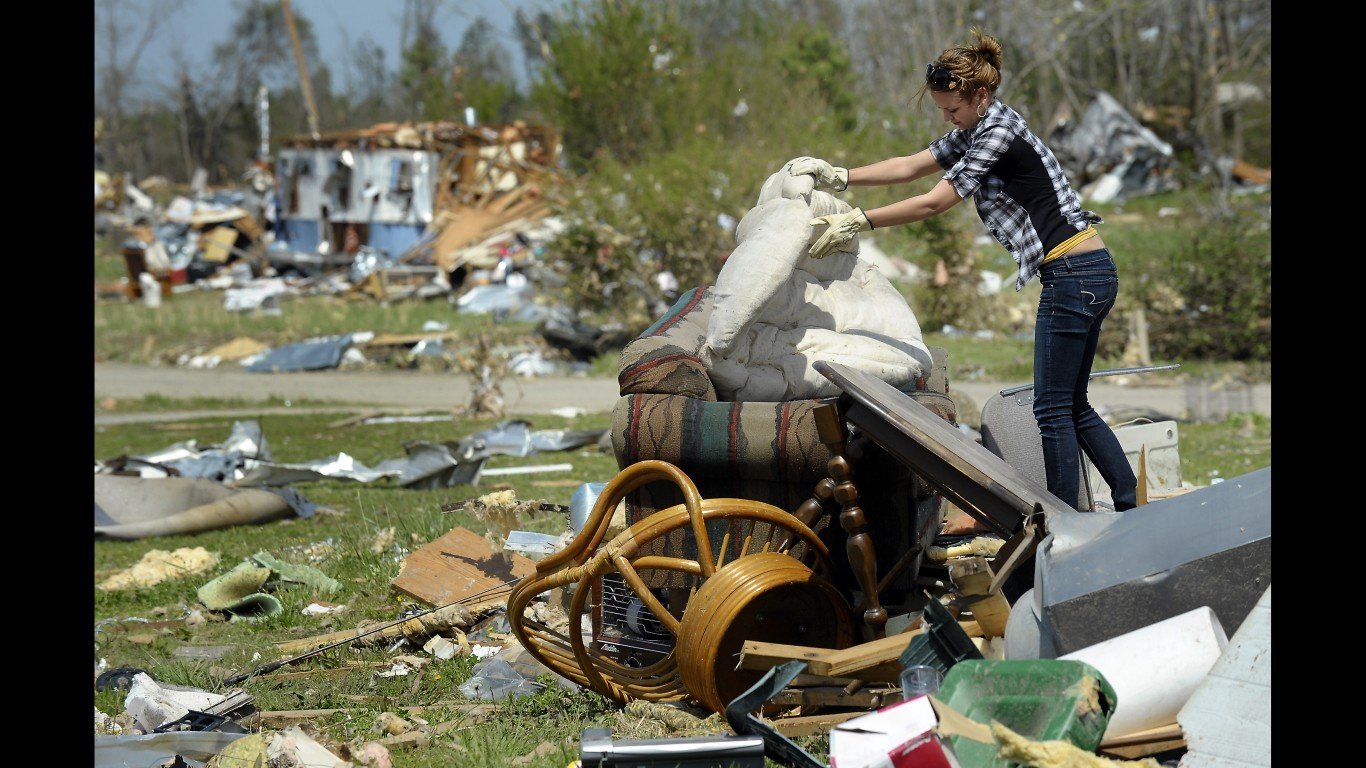
18. Midwest/Southeast Tornadoes
> Deaths: 38
> Est. cost: $2.4 billion
> Disaster classification: Severe storm
> Date: April 2011
Over the course of three days in mid-April 2011, an estimated outbreak of 177 tornadoes hit 10 states in the Midwest and Southeast. The month was one of the most active and destructive months on record for tornadoes in U.S. history. Fatalities from the storms were reported in Alabama, Arkansas, Oklahoma, and Virginia, but the majority of the 38 total deaths were reported in North Carolina.
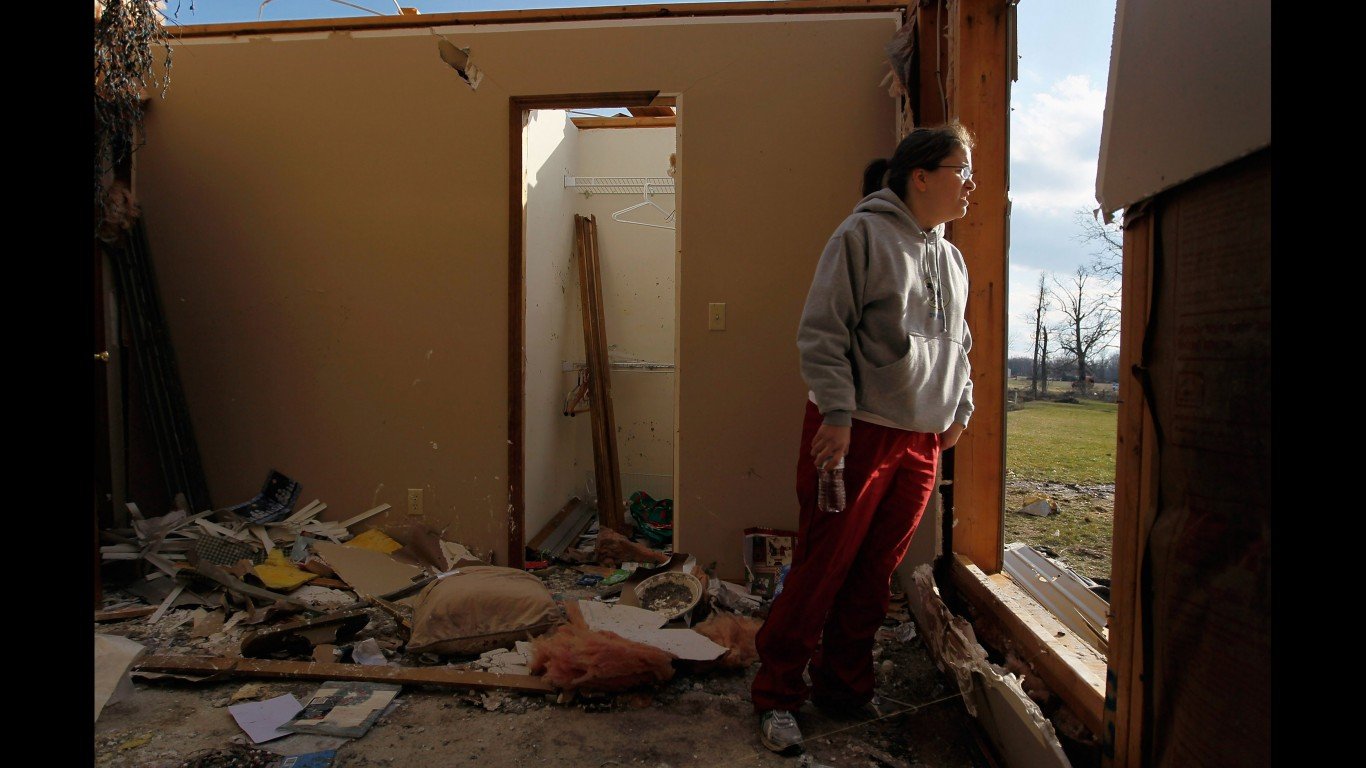
17. Southeast/Ohio Valley Tornadoes
> Deaths: 42
> Est. cost: $3.5 billion
> Disaster classification: Severe storm
> Date: March 2012
On March 2 and 3 in 2012, a series of 75 tornadoes tore across six states in the South and the Midwest, claiming 42 lives and causing $3.5 billion in damage. In the path of an EF-4 tornado (which brings winds of 166 to 200 mph), Clark County, Indiana, was particularly hard hit. In Henryville, 175 mph winds were reported, and debris from the community’s destruction was found as far as 70 miles away in Kentucky and Ohio.
[in-text-ad-2]
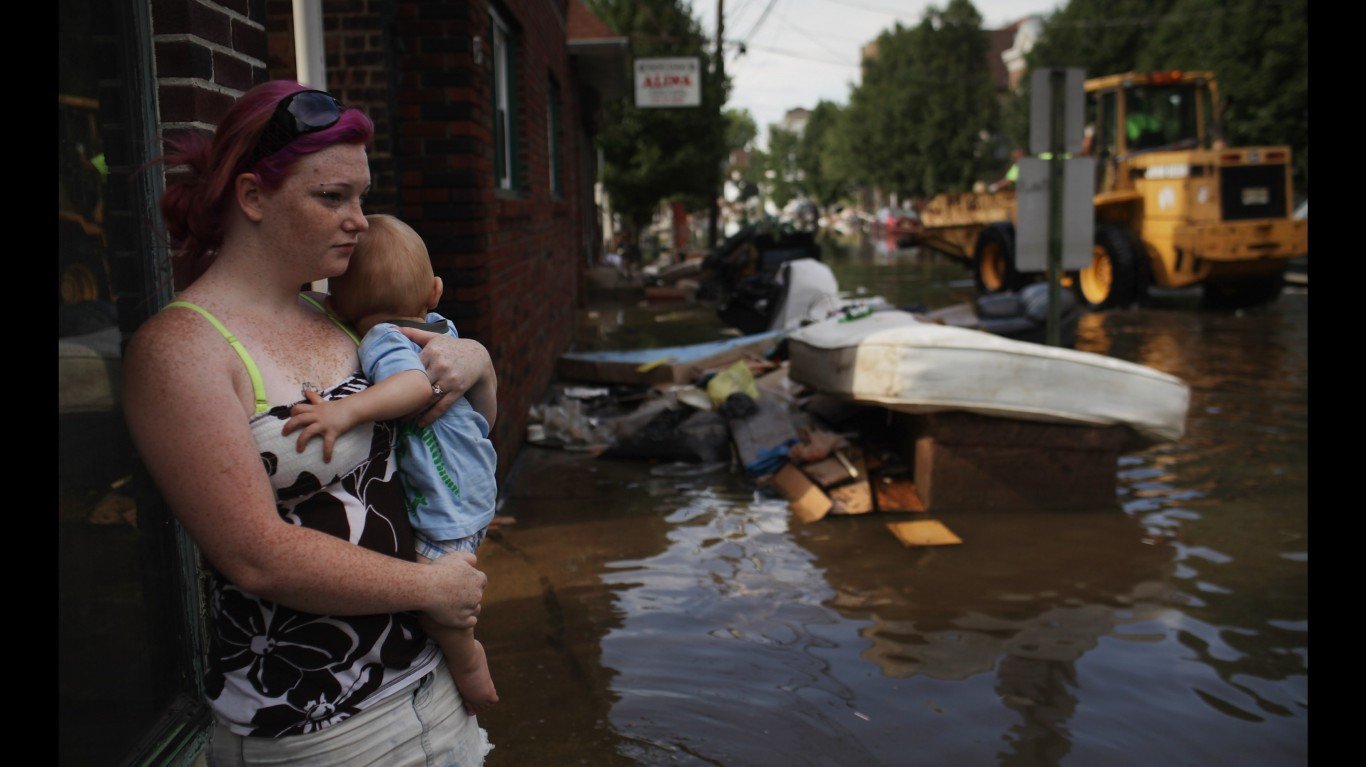
16. Hurricane Irene
> Deaths: 45
> Est. cost: $15.7 billion
> Disaster classification: Tropical cyclone
> Date: August 2011
Hurricane Irene made landfall in North Carolina as a Category 1 storm in late August 2011. Much of the damage wrought by the storm was attributable to flash flooding resulting from heavy rains, though strong winds also knocked down trees and powerlines, resulting in more than 7 million homes and businesses losing power along the eastern seaboard.
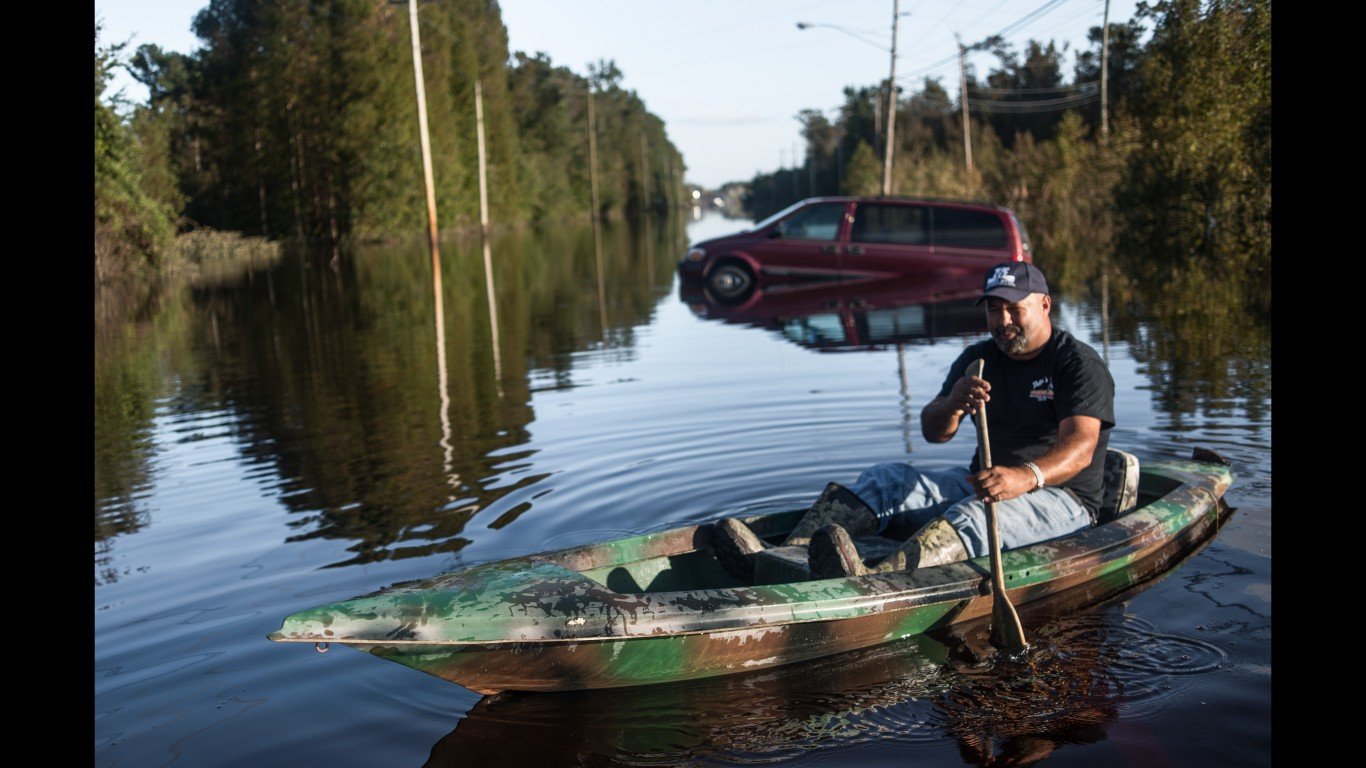
15. Hurricane Matthew
> Deaths: 49
> Est. cost: $10.8 billion
> Disaster classification: Tropical cyclone
> Date: October 2016
Claiming 49 lives and causing nearly $11 billion in damage, Hurricane Matthew is one of the deadliest and most destructive storms in the United States in the last 10 years. After narrowly missing Florida as a Category 4 storm, Matthew made landfall in South Carolina as a Category 1 storm and brought historic flooding to the eastern part of North Carolina. Parts of coastal Georgia and Florida were also affected by the storm surge brought by the hurricane.
[in-text-ad]
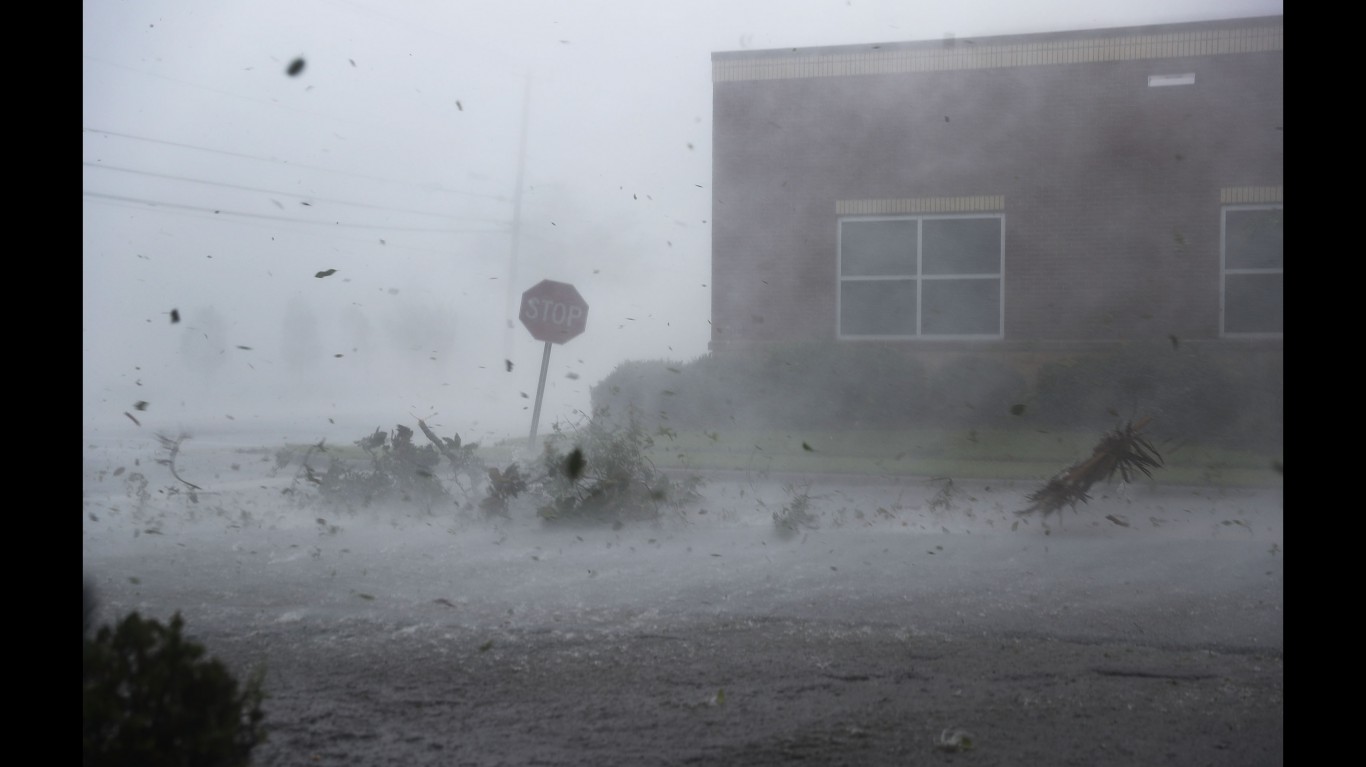
14. Hurricane Michael
> Deaths: 49
> Est. cost: $25.2 billion
> Disaster classification: Tropical cyclone
> Date: October 2018
Hurricane Michael made landfall as a Category 5 hurricane at Mexico Beach, Florida, bringing with it 160 mph winds and a 15-foot storm surge. Hitting during harvest season in early October, the storm caused billions in damage to agriculture and forestry in numerous states. All told, the storm wrought a whopping $25.2 billion in total damage, more than all but five other storms in the last decade. Michael is only the fourth Category 5 storm on record to make landfall in the United States.
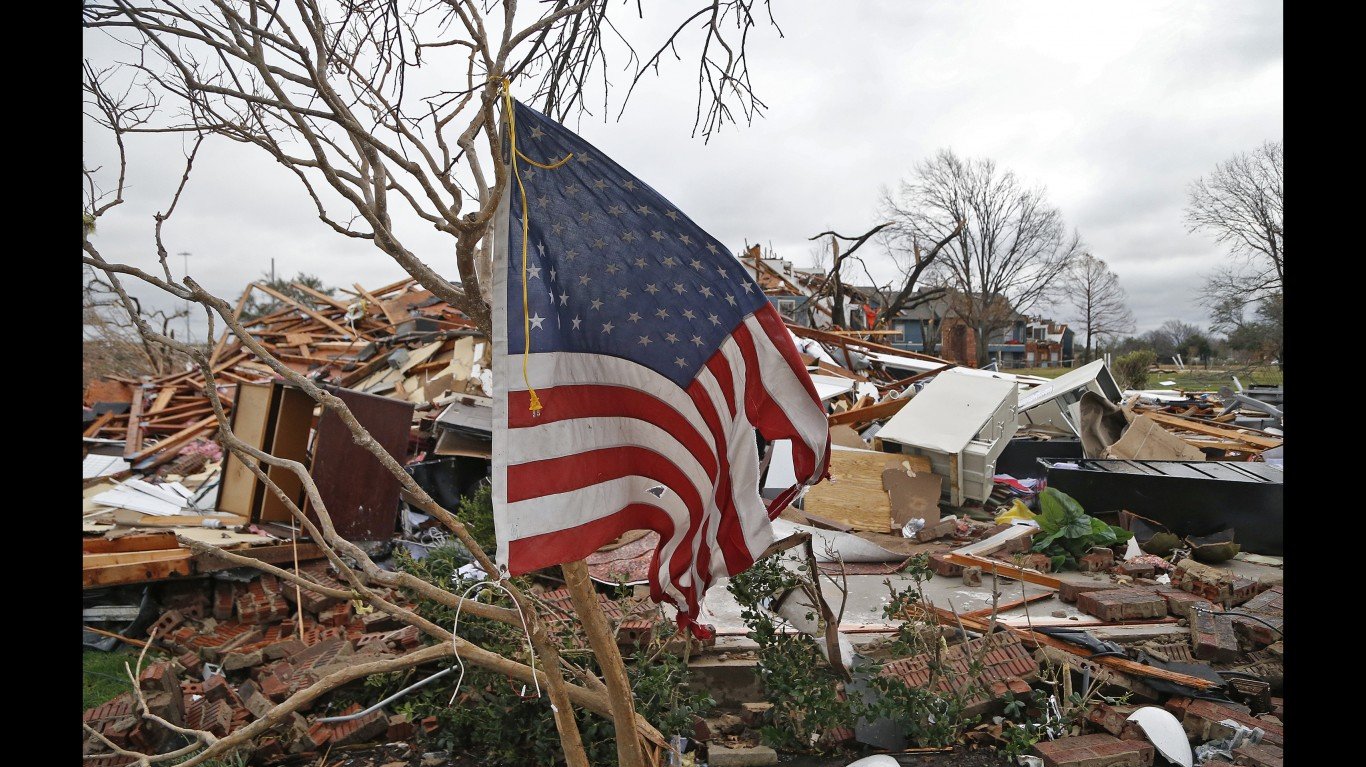
13. Texas Tornadoes and Midwest Flooding
> Deaths: 50
> Est. cost: $2.2 billion
> Disaster classification: Severe storm
> Date: December 2015
Starting the day after Christmas in 2015, a storm system lead to powerful tornadoes in the Dallas metro area and brought torrential rain and historic flooding to parts of the Midwest. The same system also brought severe winter weather with snow and ice to parts of New England. All told, the storm killed 50 people and caused $2.2 billion in damage.
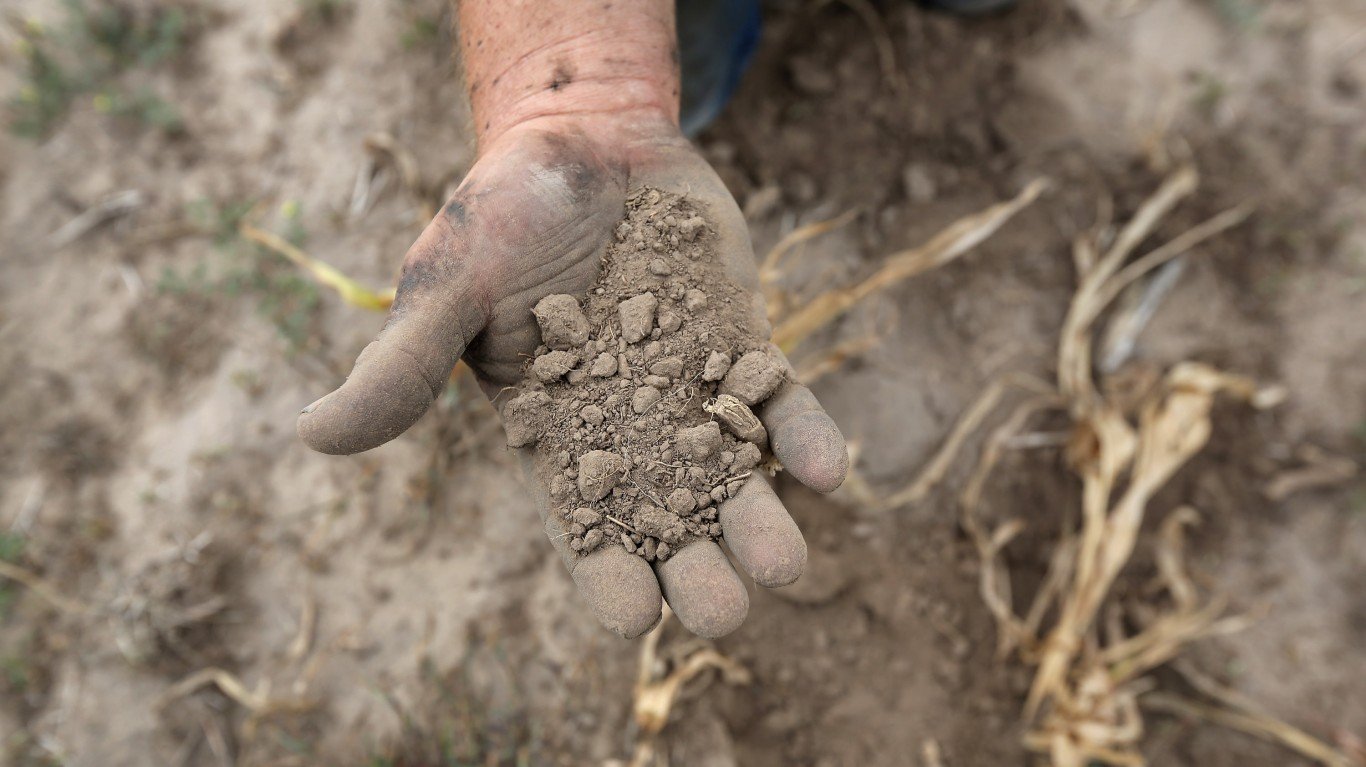
12. Western/Plains Drought/Heatwave
> Deaths: 53
> Est. cost: $11.6 billion
> Disaster classification: Drought
> Date: Spring-Fall 2013
At the beginning of 2013, moderate to exceptional drought conditions covered over half of the Midwest. Though heavy rains improved conditions by midyear, the rains stopped in July and dry conditions carried into autumn, pushing 32% of the Midwest back to drought conditions. Meanwhile, over half of the western United States was under drought conditions for the majority of the year. The drought lead to extensive crop damage. In the summer of 2013, much of the Midwest also reported record high temperatures.
[in-text-ad-2]
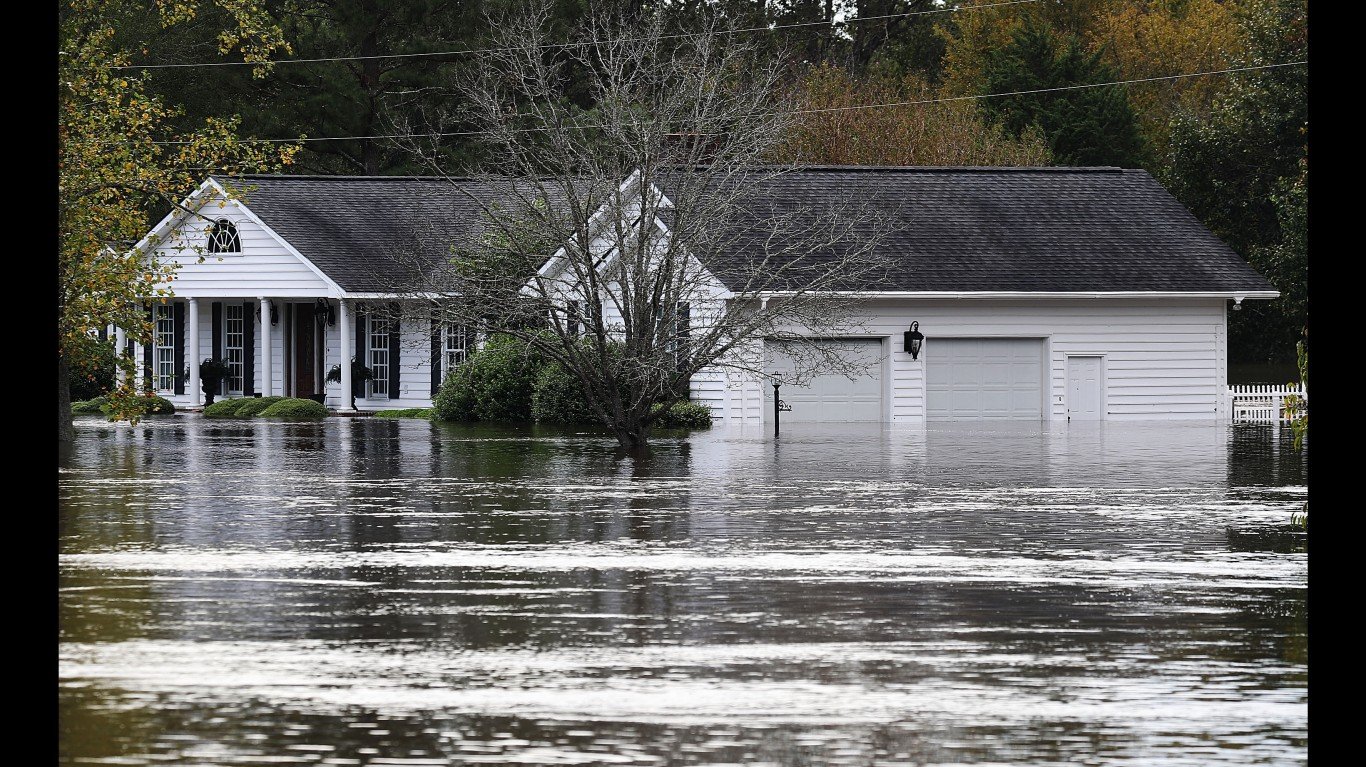
11. Hurricane Florence
> Deaths: 53
> Est. cost: $24.2 billion
> Disaster classification: Tropical cyclone
> Date: September 2018
Hurricane Florence made landfall on the morning of Sept, 14, 2018 in Wrightsville Beach, North Carolina, as a Category 1 storm, bringing with it a 10-foot storm surge and winds of over 100 mph. The majority of the damage wrought by the storm was due to heavy rains that brought historic flooding inland. In total, the storm lead to 53 deaths and caused a staggering $24.2 billion in damage.
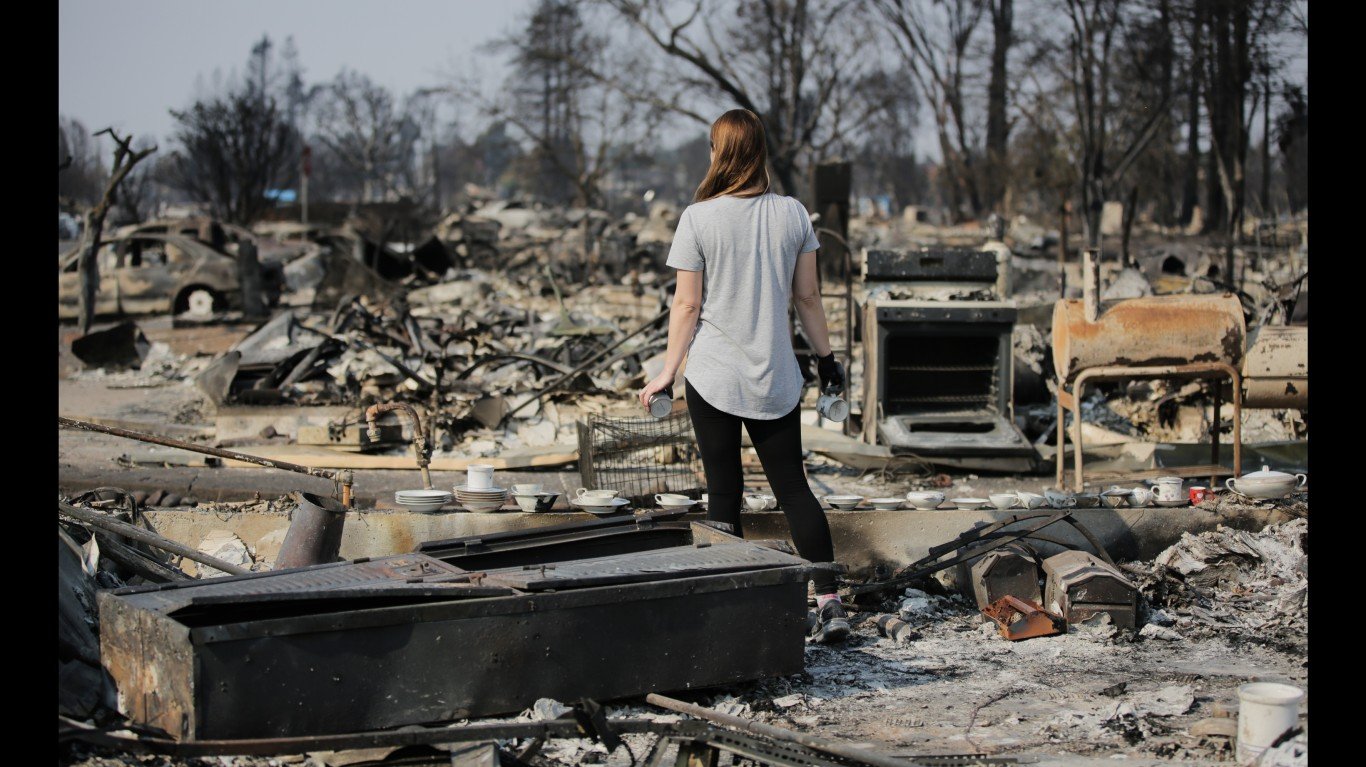
10. Western Wildfires, California Firestorm
> Deaths: 54
> Est. cost: $18.7 billion
> Disaster classification: Wildfire
> Date: Summer-Fall 2017
Drought conditions lead to one of the deadliest and most costly firestorms in U.S. history. The Tubbs, Atlas, Nuns, and Redwood Valley fires in California in October killed dozens and destroyed thousands of homes and businesses. December fires in Los Angeles burned hundreds of homes, and in Montana, over a million acres burned. The wildfires caused a total of nearly $19 billion in damage and were the costliest in U.S. history to date.
[in-text-ad]
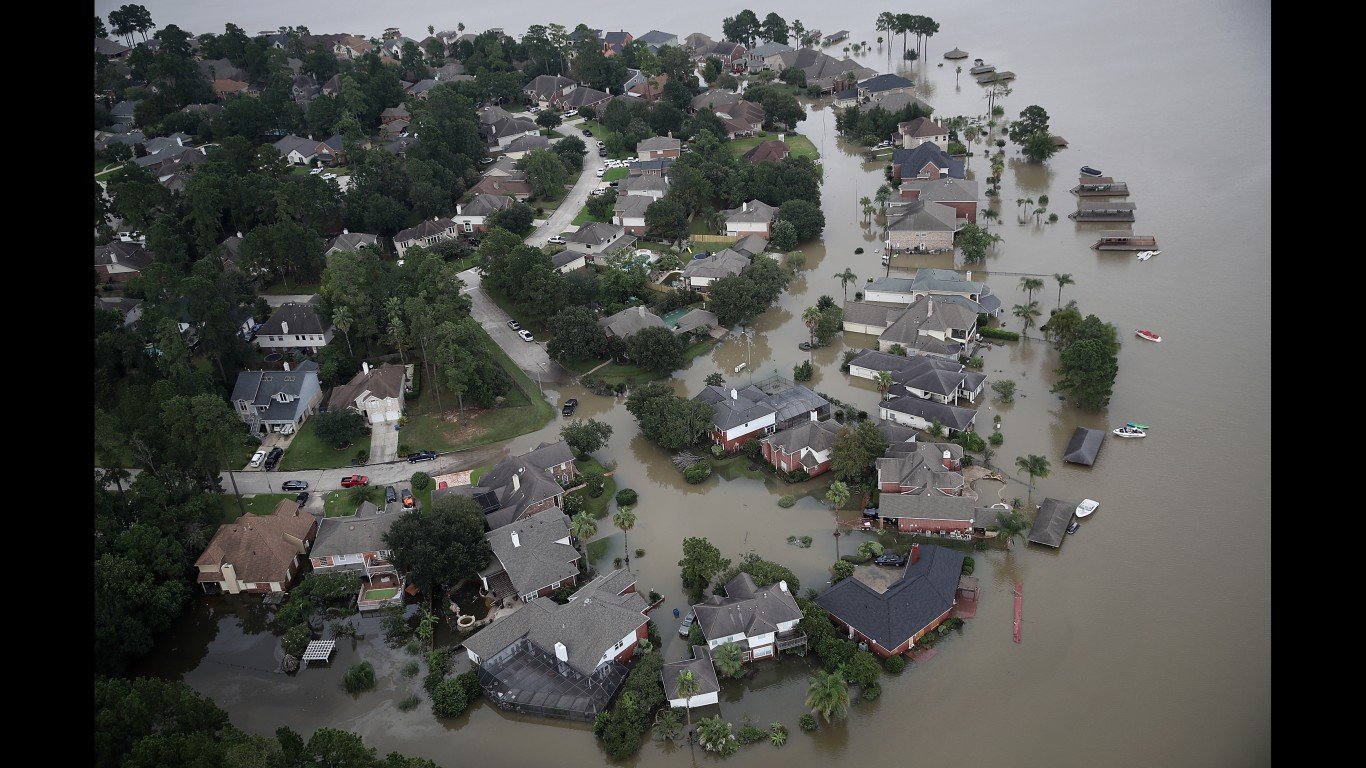
9. Hurricane Harvey
> Deaths: 89
> Est. cost: $130 billion
> Disaster classification: Tropical cyclone
> Date: August 2017
Hurricane Harvey caused historic flooding in and around Houston, Texas. Nearly 7 million people lived in areas that reported over 30 inches of rainfall in a single week. Many of them reported 45 to 50 inches of rainfall over that period. The devastation was widespread, as 89 deaths were reported, over 200,000 homes and businesses were damaged or destroyed, and over 30,000 people were displaced. The storm cased an estimated $130 billion in damage — making it by far the most costly in the last decade and the second most costly natural disaster since at least 1980, trailing only Hurricane Katrina, a storm that caused over $167 billion in damage.
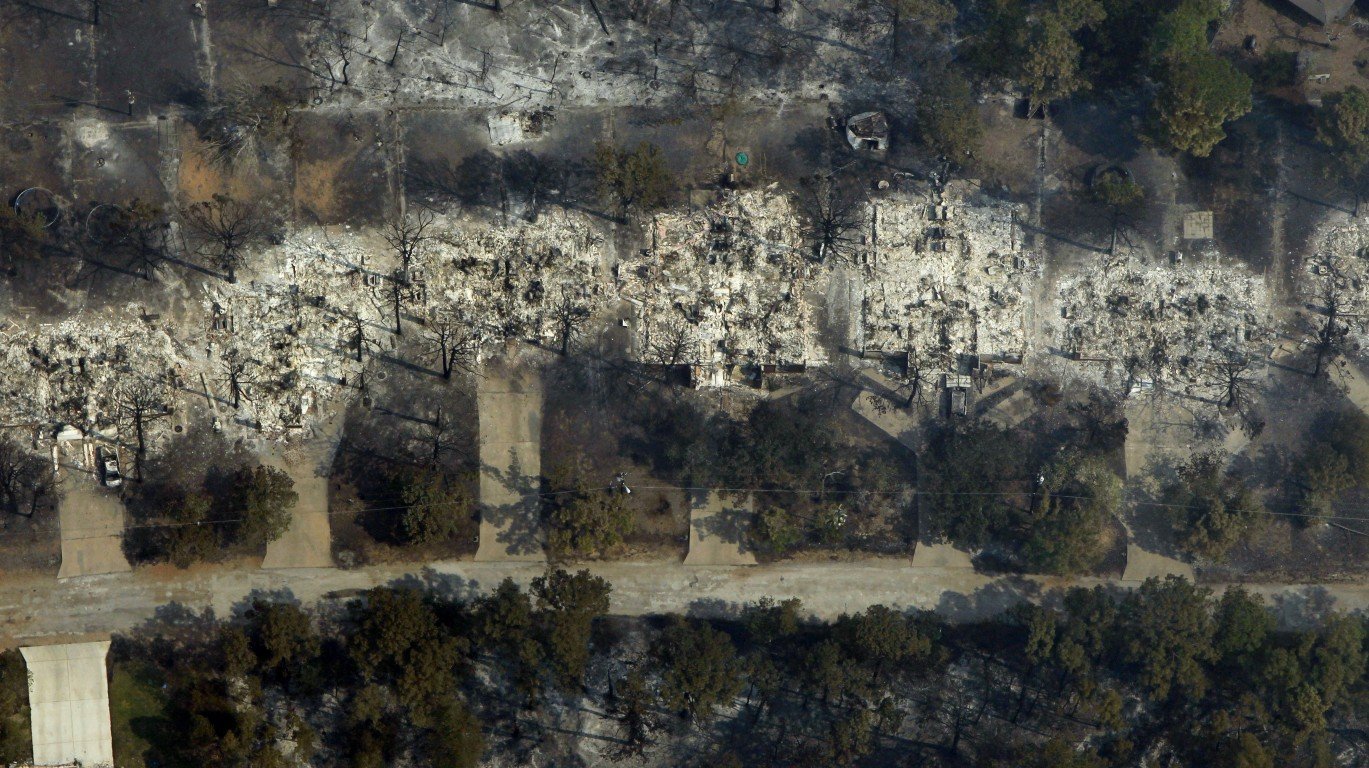
8. Southern Plains/Southwest Drought & Heat Wave
> Deaths: 95
> Est. cost: $13.9 billion
> Disaster classification: Drought
> Date: Spring-Summer 2011
Several Southern Plains states were affected by serious drought for much of the year. From January through October, Texas received only 11 inches of rain, less than half the average of 24 inches for that period. Oklahoma reported less than 19 inches over the same period, compared to an average of 30 inches. The effects on agriculture were devastating as over half of all rangeland and pastures in the two states were classified as in “very poor” condition for much of 2011. New Mexico, Arizona, Kansas, and Louisiana were also affected by drought and heatwave conditions. Many deaths were also attributed to the heatwave over the same period.
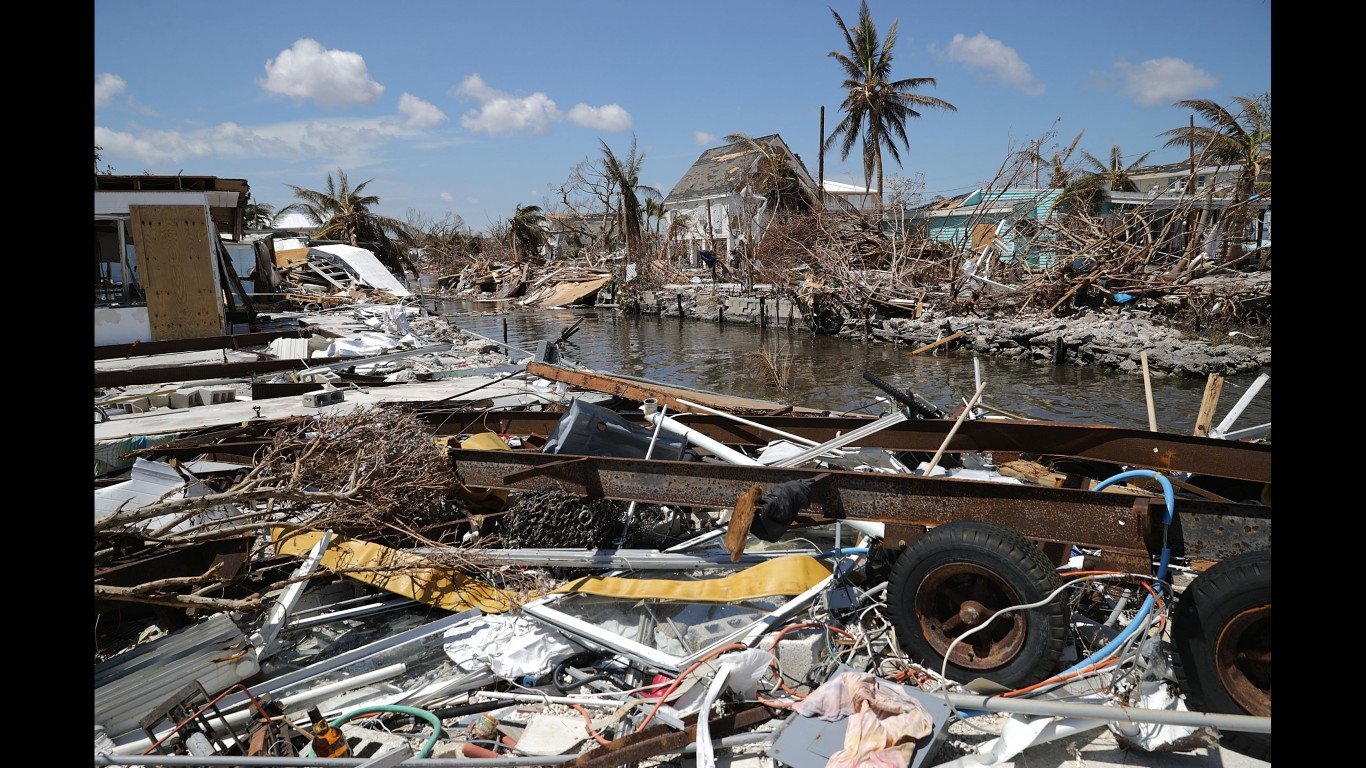
7. Hurricane Irma
> Deaths: 97
> Est. cost: $52.0 billion
> Disaster classification: Tropical cyclone
> Date: September 2017
With a death toll of 97, Hurricane Irma is the sixth deadliest hurricane to hit the United States in the last 40 years. Irma made landfall as a Category 4 storm in the Florida Keys, where it destroyed one-quarter of all buildings and damaged nearly two-thirds of buildings. It had previously devastated the U.S. Virgin Islands as a Category 5 storm. The hurricane brought damage from storm surges and high winds to coastal portions of mainland Florida and South Carolina. Charleston and Jacksonville reported near record-breaking flooding.
Hurricane Irma brought sustained wind speeds of 185 mph for 37 hours — the longest stretch ever recorded by satellite.
[in-text-ad-2]

6. Western Wildfires, California Firestorm
> Deaths: 106
> Est. cost: $24.5 billion
> Disaster classification: Wildfire
> Date: Summer-Fall 2018
Over the second half of 2018, California experienced its deadliest, costliest, and largest wildfires on record. The Camp Fire, which started in November in Butte County in the northern part of the state, destroyed more than 18,500 buildings and killed dozens of people. The Mendocino Complex Fire, which started in the summer about 100 miles north of San Francisco, burned nearly half a million acres. Other devastating fires in the period include the Carr Fire in Northern California and the Woolsey Fire in Southern California.

5. U.S. Drought/Heatwave
> Deaths: 123
> Est. cost: $33.9 billion
> Disaster classification: Drought
> Date: 2012
Over half of the country was in a drought — ranging in severity from moderate to extreme — throughout most of 2012. The drought, which affected much of the country’s agricultural backbone resulted in massive crop failures for corn, sorghum, and soybeans, costing billions. The drought was the worst in the United States since the 1930s. The heatwave that came with the drought killed an estimated 123 people and may have been a factor in many more fatalities.
[in-text-ad]
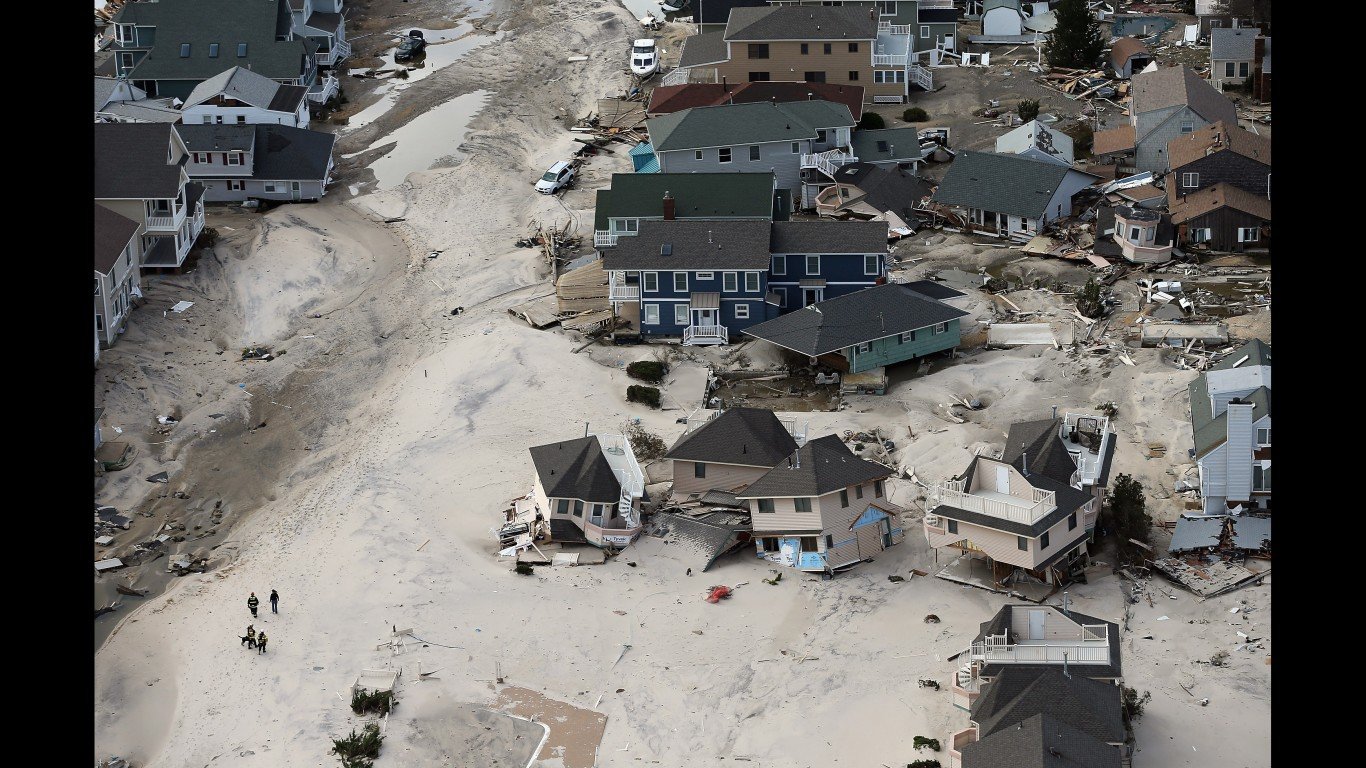
4. Hurricane Sandy
> Deaths: 159
> Est. cost: $73.5 billion
> Disaster classification: Tropical cyclone
> Date: October 2012
In late October 2012, Hurricane Sandy rocked much of the mid-Atlantic and northeastern United States. Though by the time it made landfall along the New Jersey coast the storm had been downgraded to a post-tropical cyclone, its effects were devastating. Nearly 8 million households and businesses lost power across 15 states. In New York City, Sandy brought a record 13.9-foot storm surge and resulted in the closure of the New York Stock Exchange for two consecutive business days — the first time this had happened due to severe winter weather since 1888.
All told, Sandy was the third deadliest hurricane since at least 1980, claiming 159 lives. It was the fourth most destructive over the same period, causing an estimated $73.5 billion in damage.
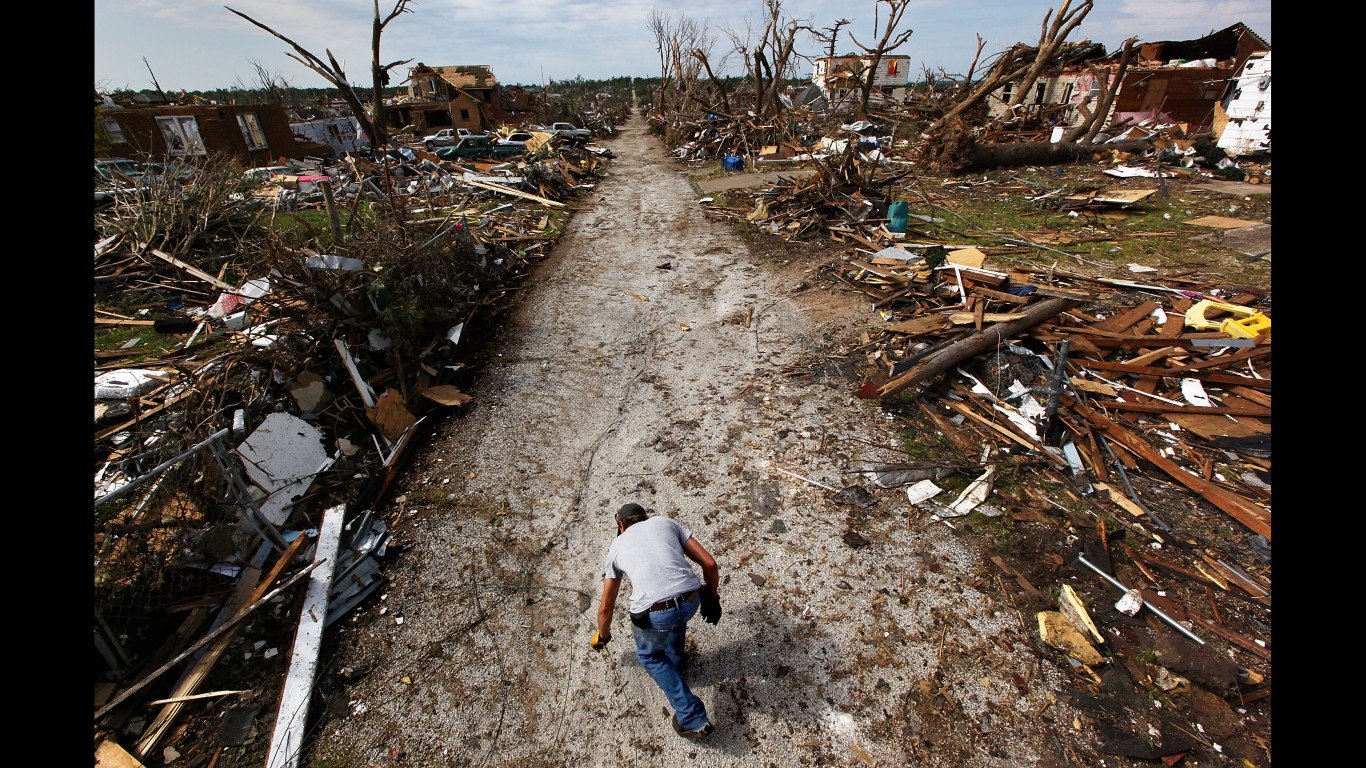
3. Midwest/Southeast Tornadoes
> Deaths: 177
> Est. cost: $10.6 billion
> Disaster classification: Severe storm
> Date: May 2011
Over the course of several days in late May 2011, an estimated 180 tornadoes broke out over 15 states, mostly in the Midwest and Southeast. The most devastating of them was an EF-5 tornado (with winds of more than 200 mph) that tore through Joplin, Missouri. That tornado alone accounted for at least 160 of the 177 deaths during the storms and is the deadliest tornado on record since at least 1950.
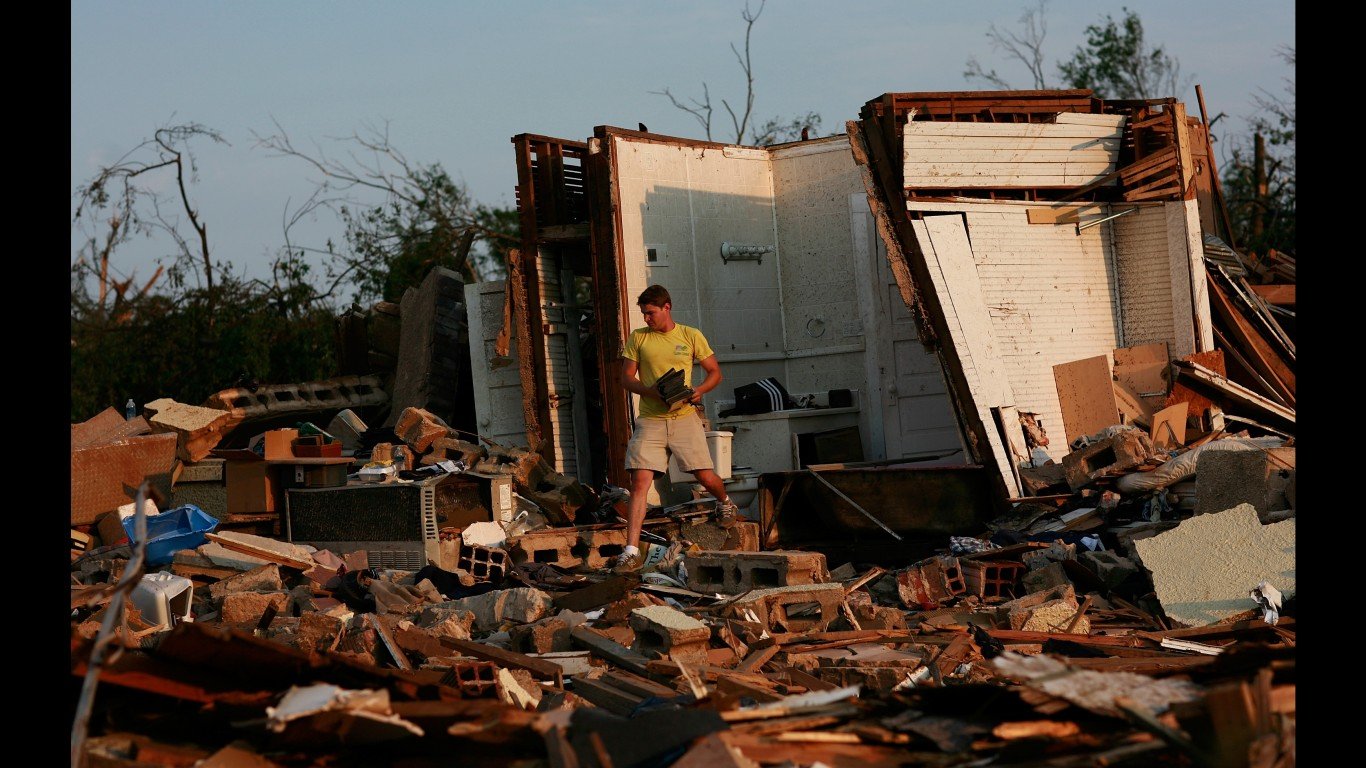
2. Southeast/Ohio Valley/Midwest Tornadoes
> Deaths: 321
> Est. cost: $11.9 billion
> Disaster classification: Severe storm
> Date: April 2011
In late April 2011, an estimated 343 tornadoes ripped across parts of the Midwest and southeastern United States. One EF-5 tornado (with winds of more than 200 mph) that touched down in northern Alabama killed 78 people. Several major cities across Alabama and Tennessee, including Birmingham, Chattanooga, Huntsville, and Tuscaloosa, bore much of the damage. Across the 13 states affected, 321 were killed, and damages nearly topped $12 billion.
[in-text-ad-2]
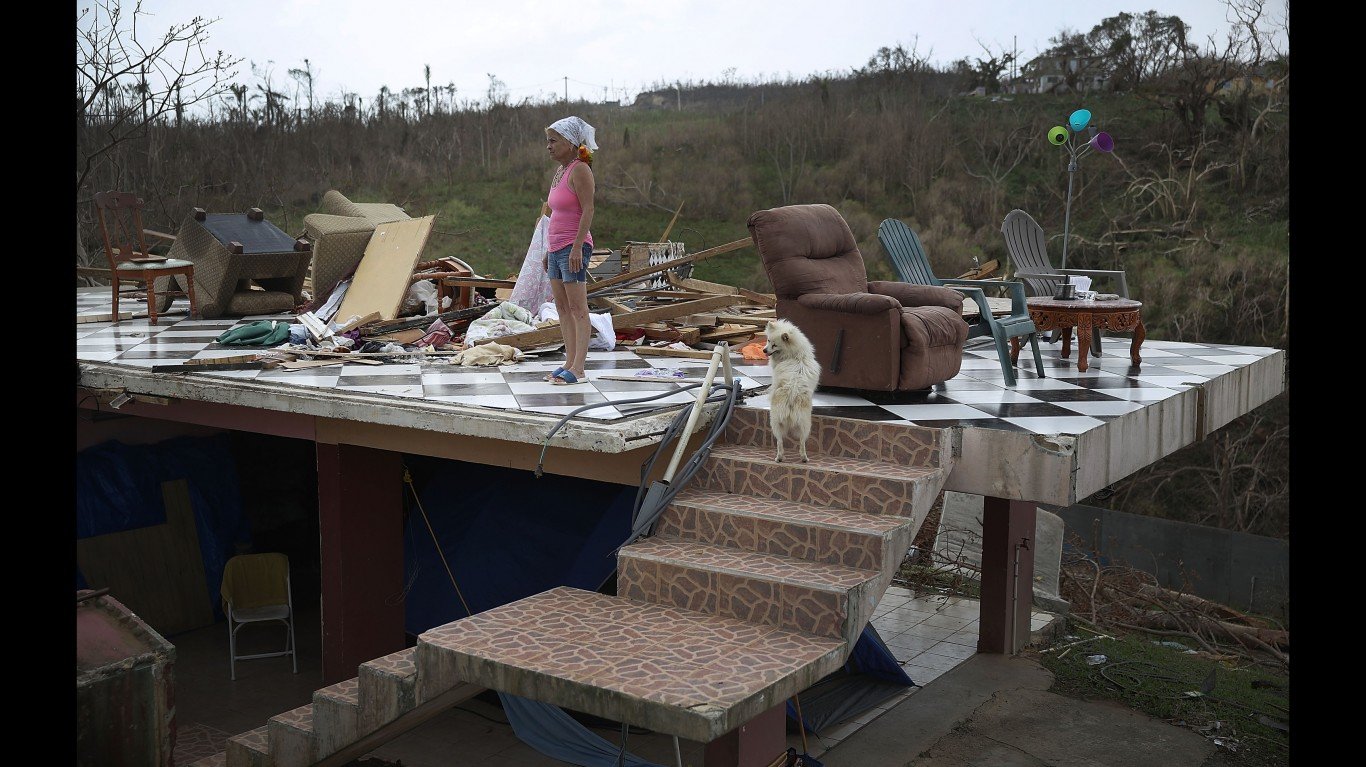
1. Hurricane Maria
> Deaths: 2,981
> Est. cost: $93.6 billion
> Disaster classification: Tropical cyclone
> Date: September 2017
Hurricane Maria devastated the U.S. territory of Puerto Rico in mid-September 2017. Making landfall as a Category 4 hurricane, Maria brought not only high winds to the island, but also up to 37 inches of rain, which led to mudslides and widespread flooding and extensive damage to the island’s transportation, agriculture, communications, and energy infrastructure.
The storm’s death toll was the subject of controversy up to a year after the storm. Initially listed at 64, the death toll was officially raised to nearly 3,000 in August of 2018 — making it by far the deadliest storm to hit the U.S. in at least the last 40 years.
Essential Tips for Investing: Sponsored
A financial advisor can help you understand the advantages and disadvantages of investment properties. Finding a qualified financial advisor doesn’t have to be hard. SmartAsset’s free tool matches you with up to three financial advisors who serve your area, and you can interview your advisor matches at no cost to decide which one is right for you. If you’re ready to find an advisor who can help you achieve your financial goals, get started now.
Investing in real estate can diversify your portfolio. But expanding your horizons may add additional costs. If you’re an investor looking to minimize expenses, consider checking out online brokerages. They often offer low investment fees, helping you maximize your profit.
Thank you for reading! Have some feedback for us?
Contact the 24/7 Wall St. editorial team.
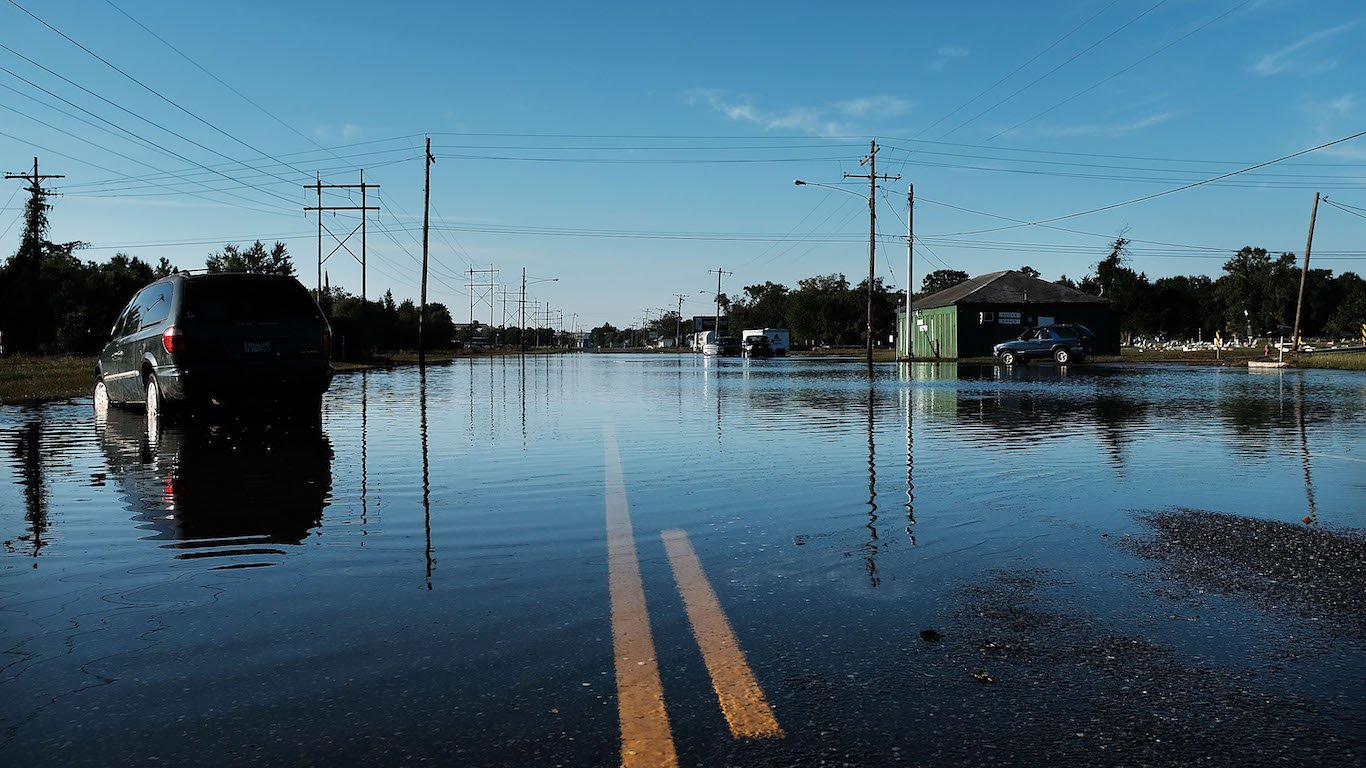 24/7 Wall St.
24/7 Wall St.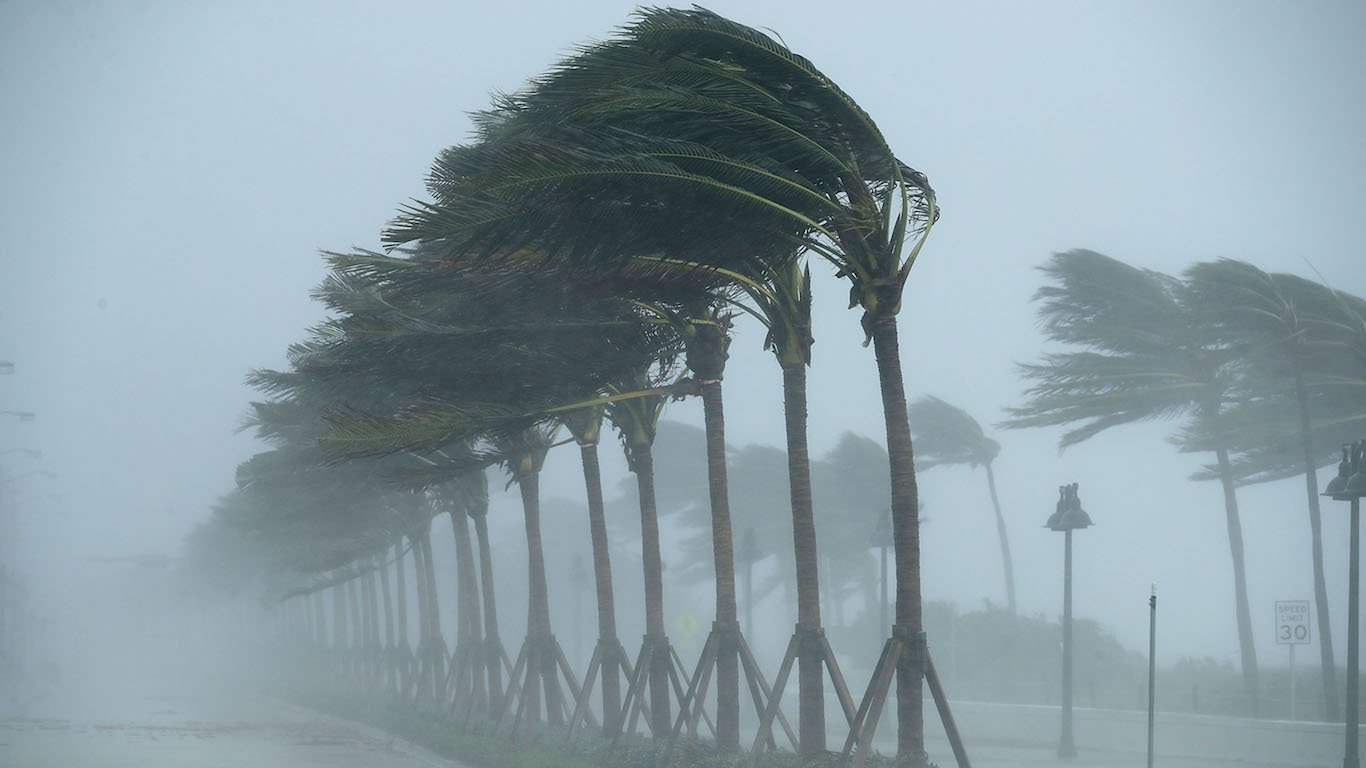 24/7 Wall St.
24/7 Wall St.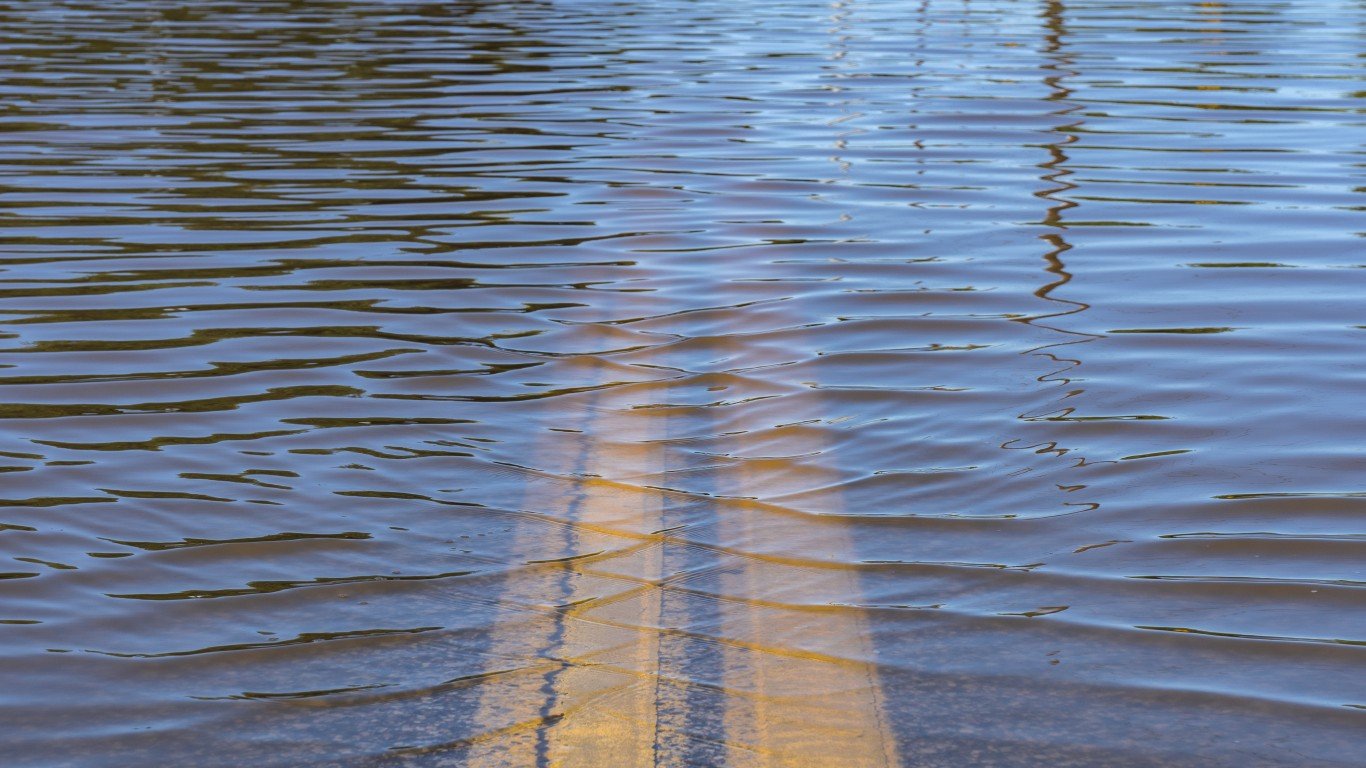 24/7 Wall St.
24/7 Wall St. 24/7 Wall St.
24/7 Wall St.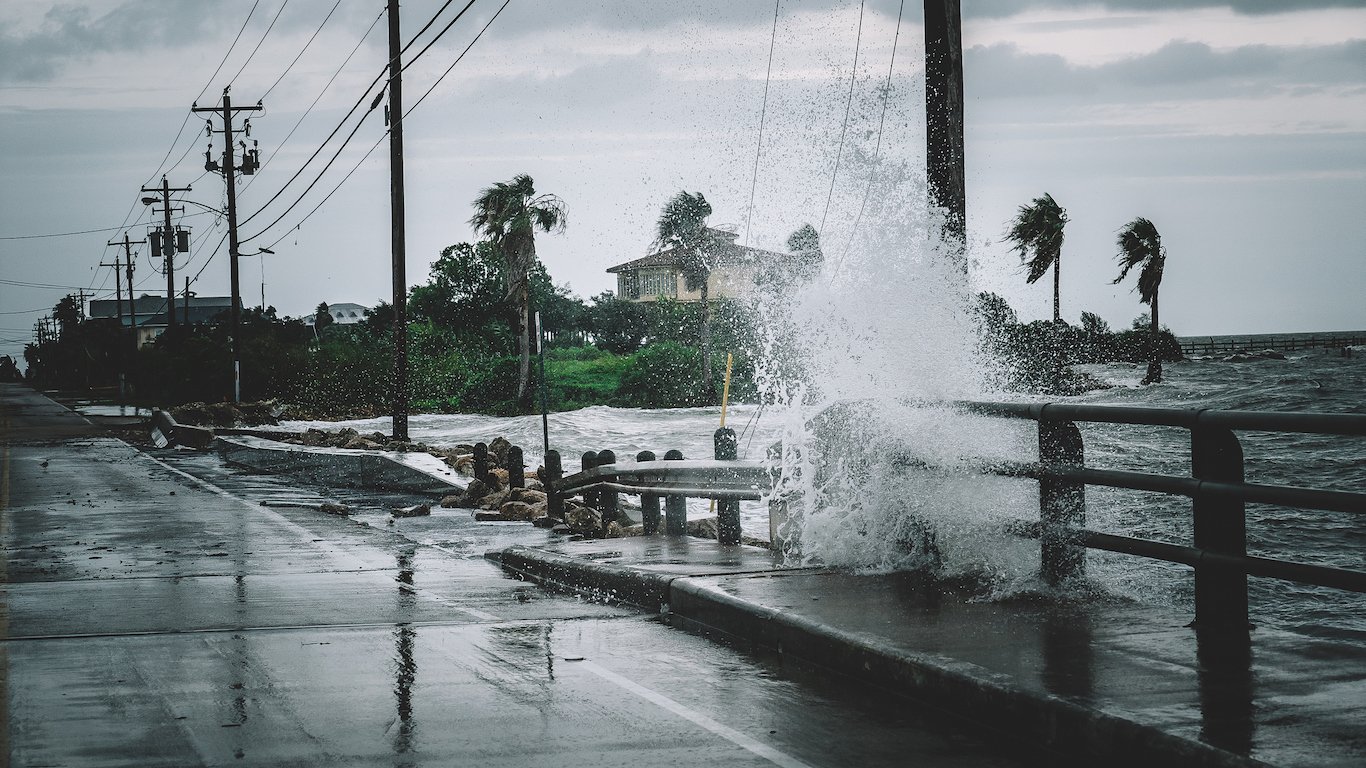 24/7 Wall St.
24/7 Wall St.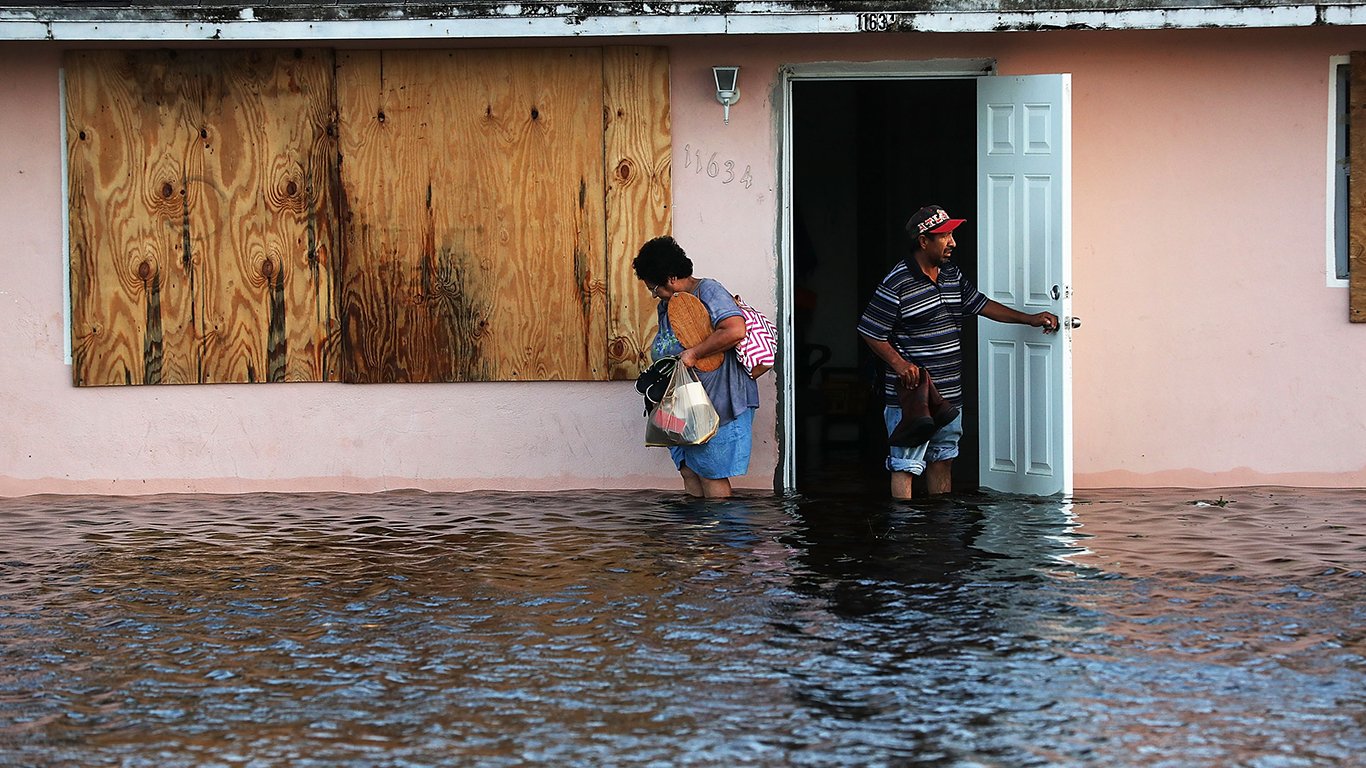 24/7 Wall St.
24/7 Wall St.